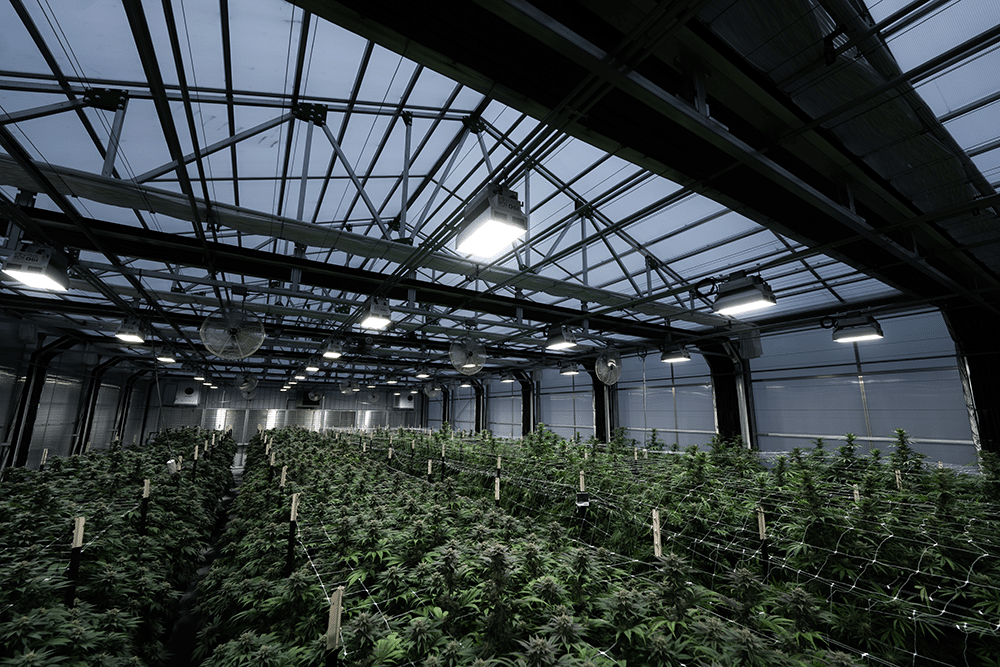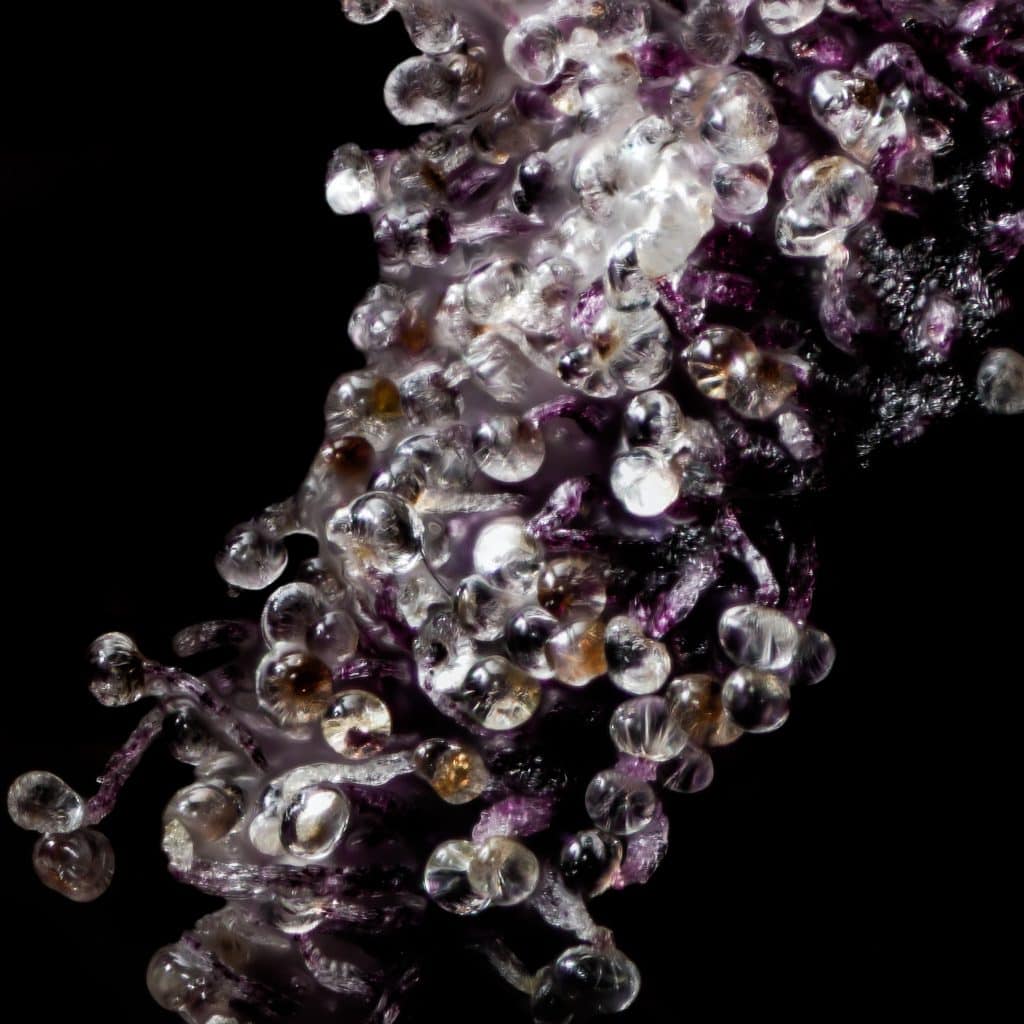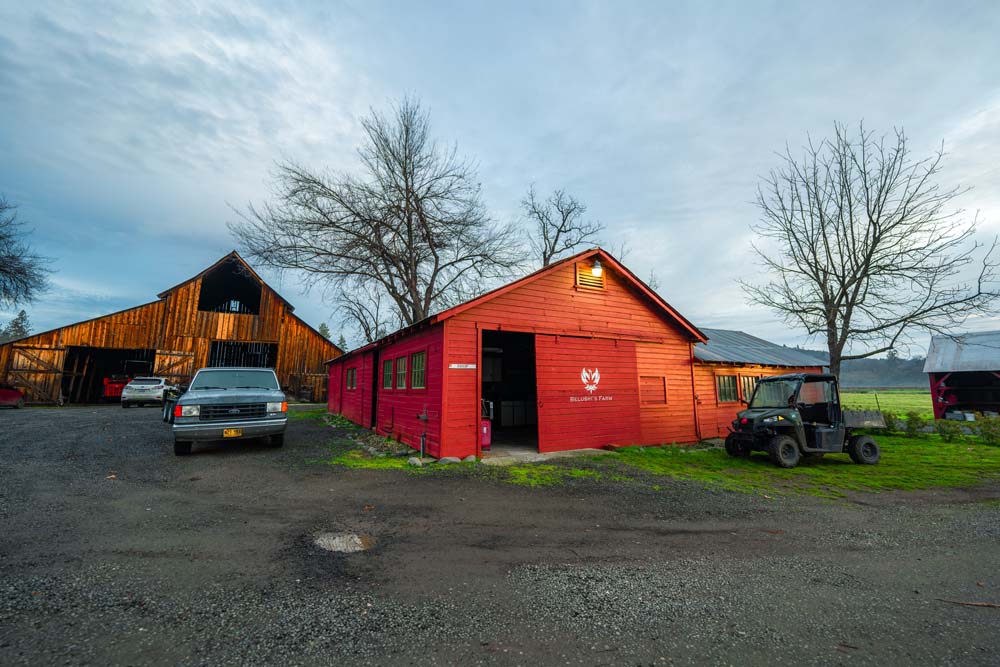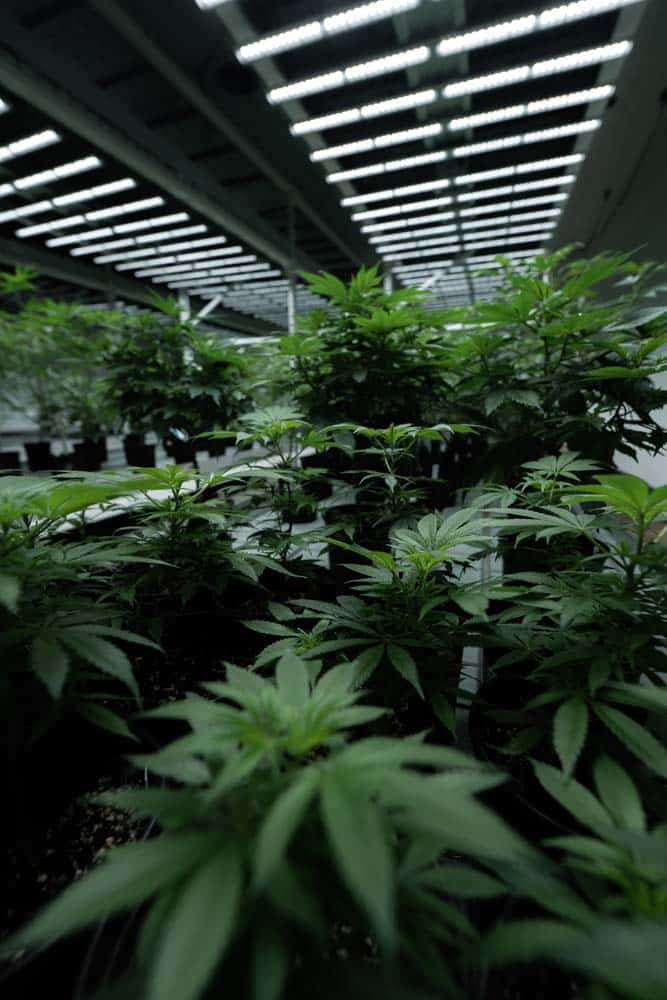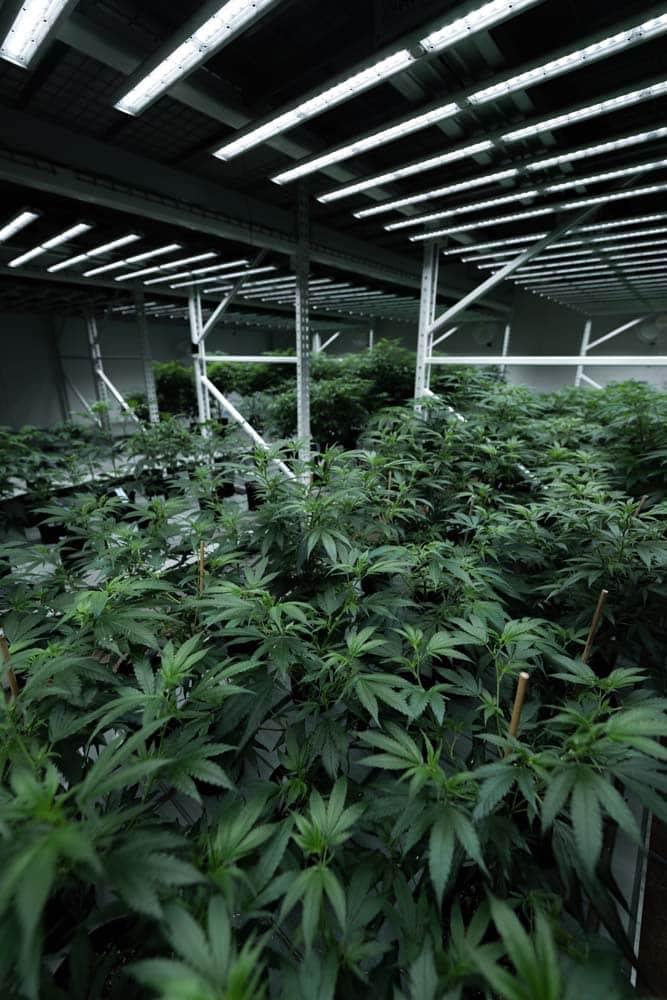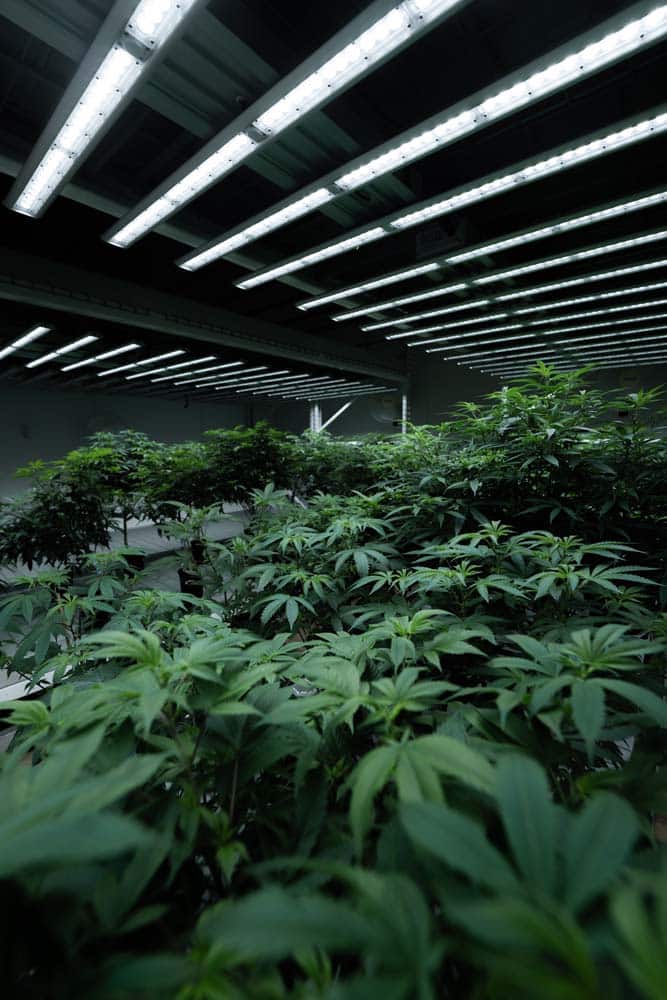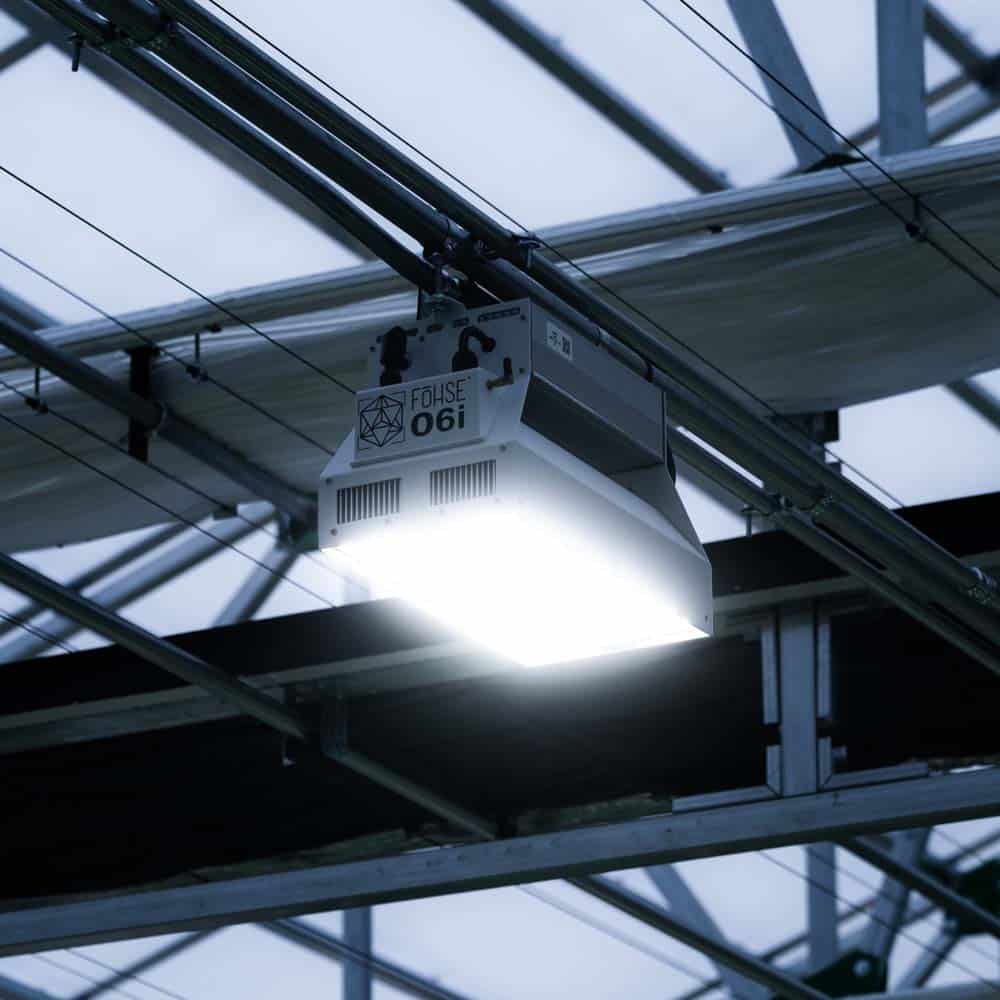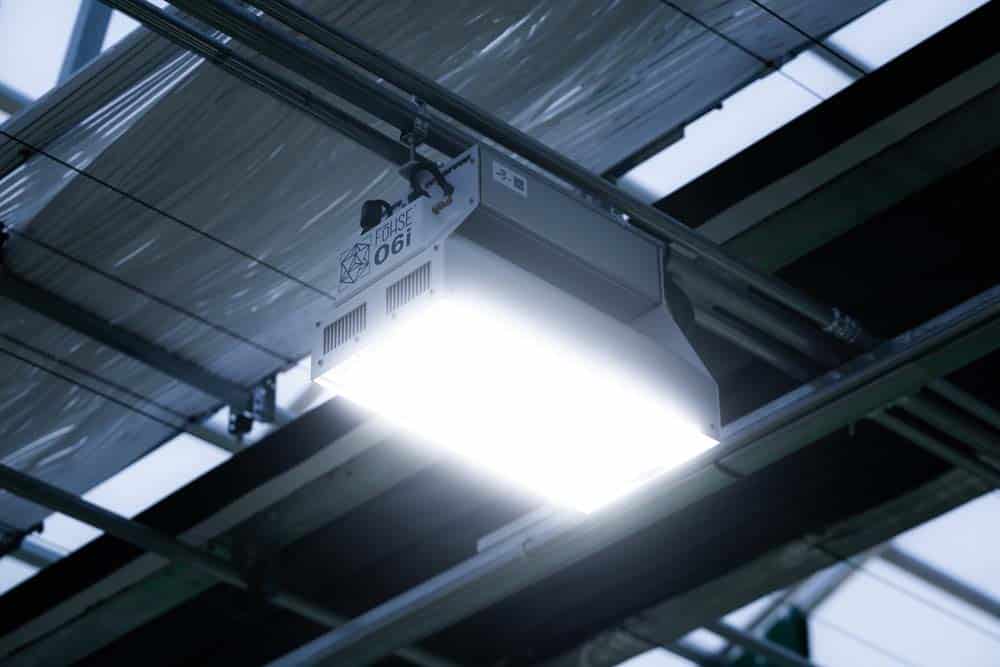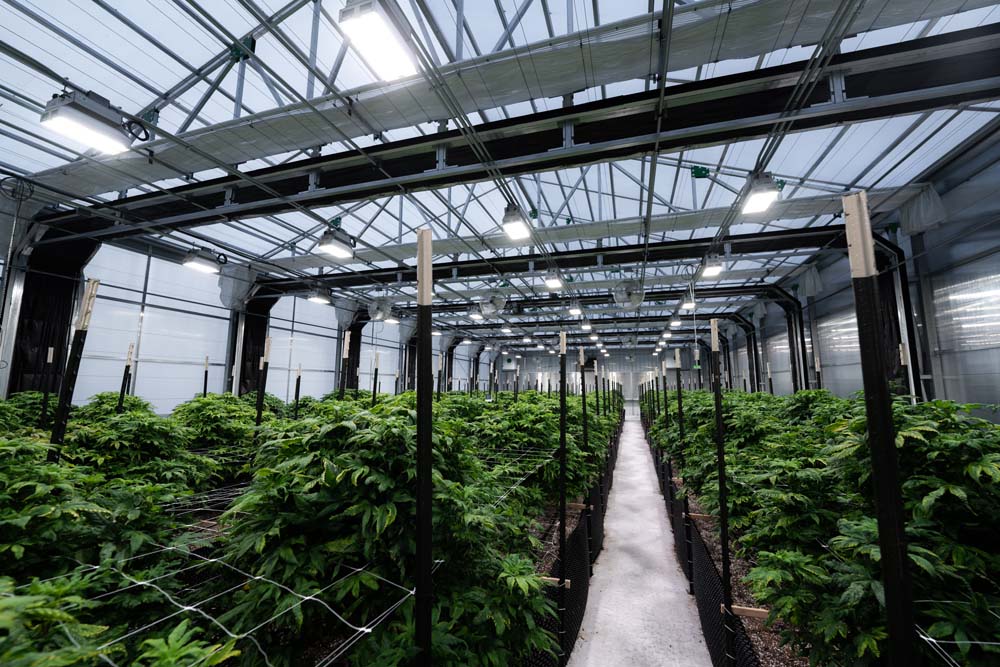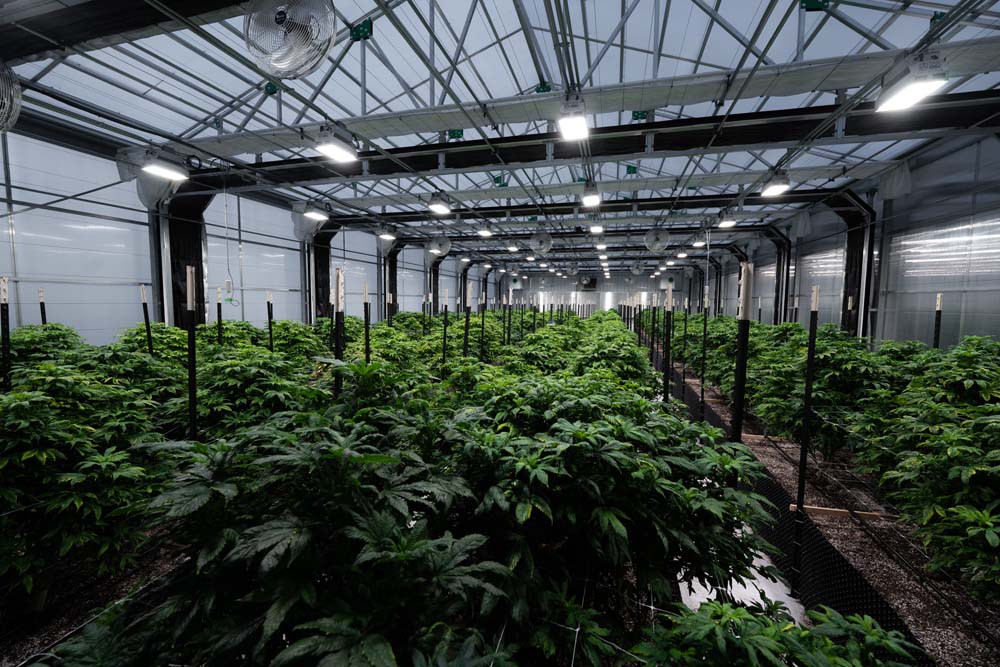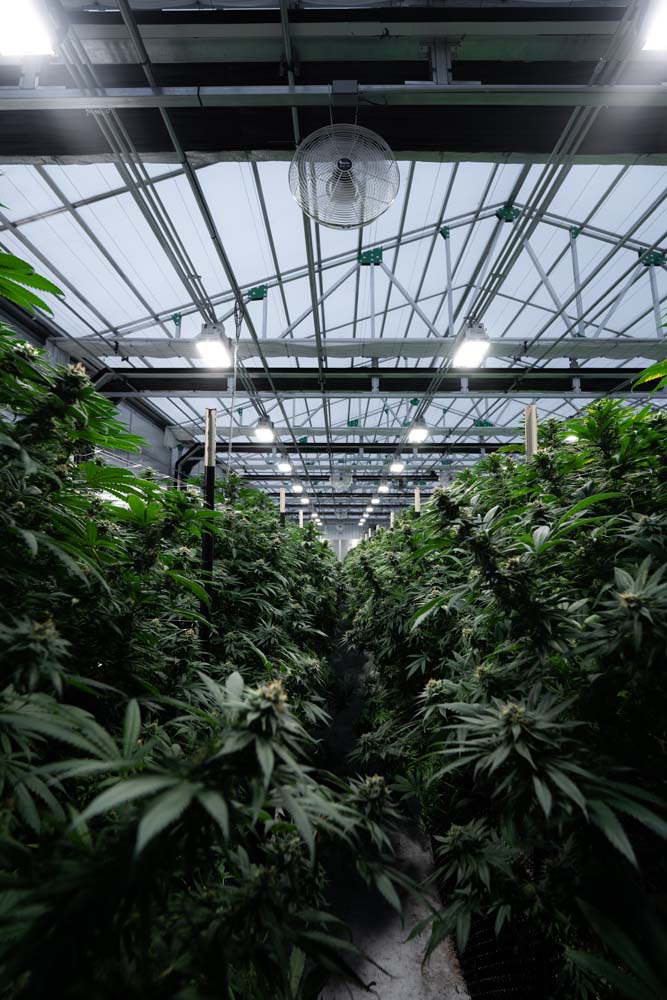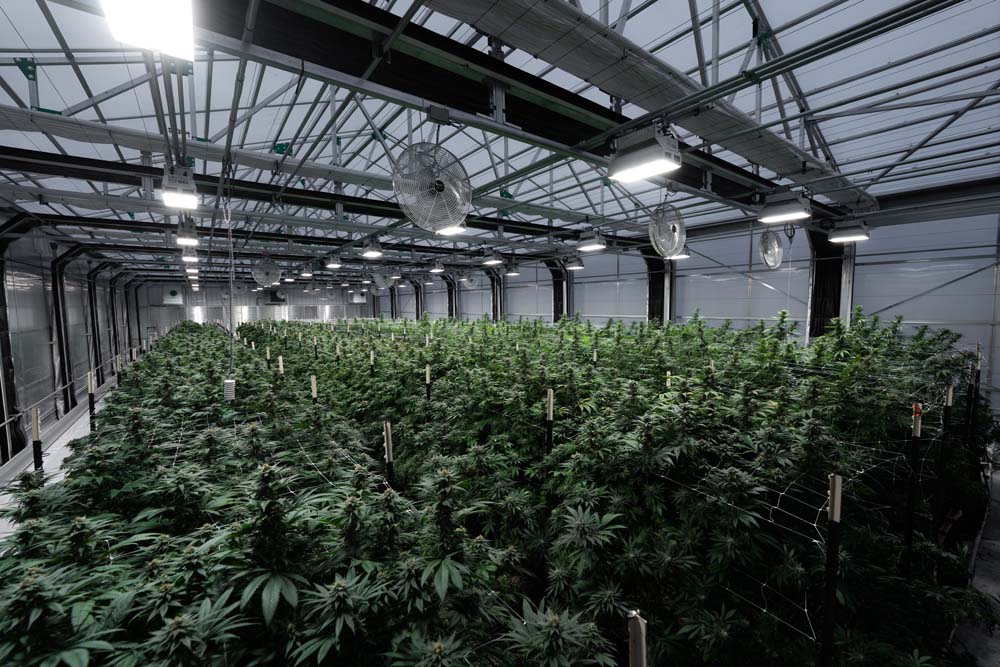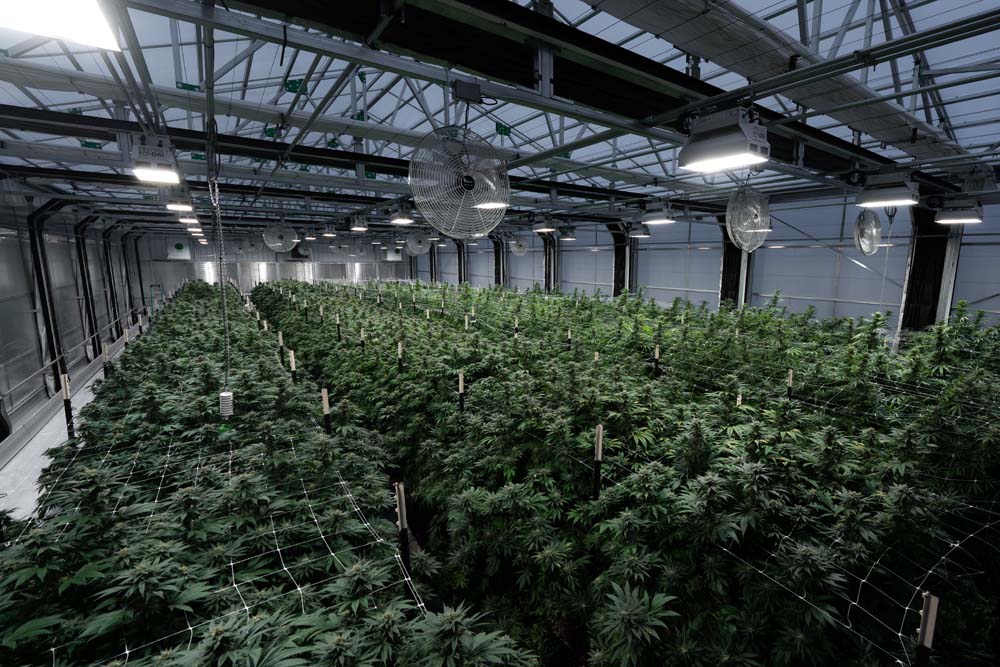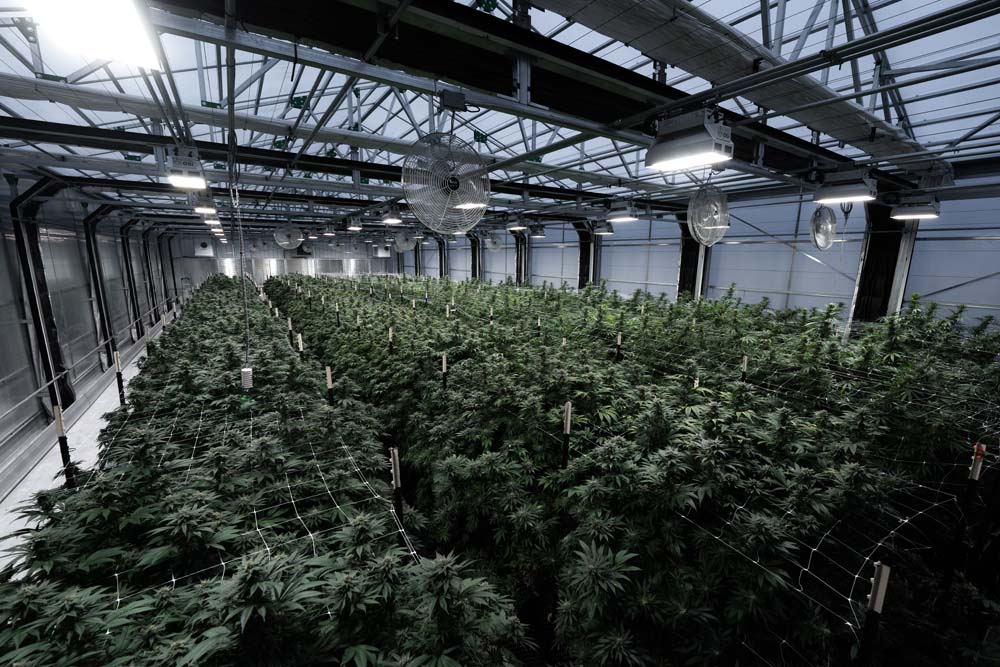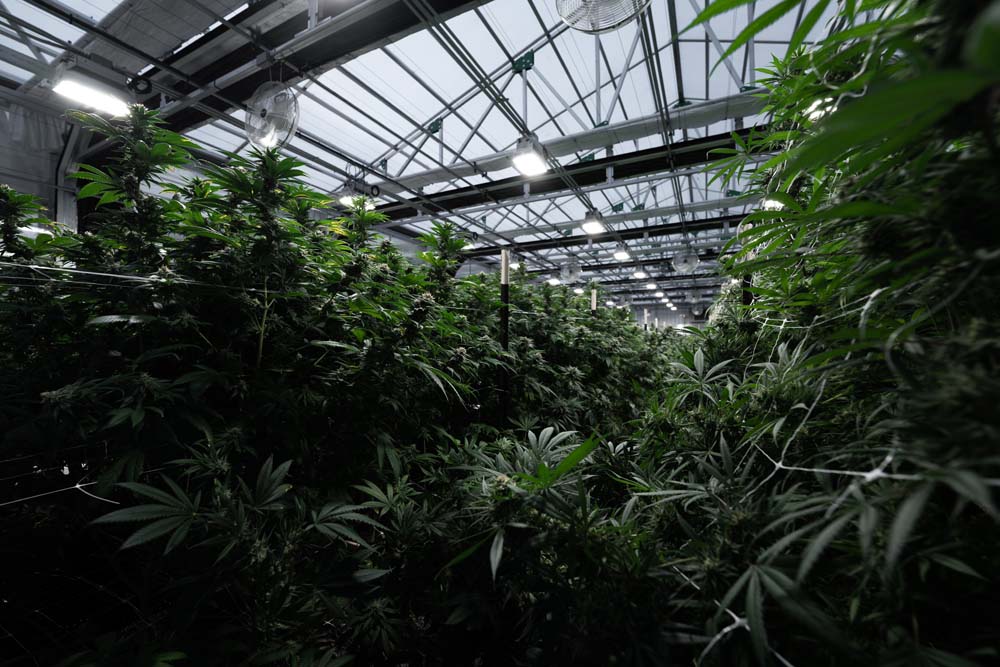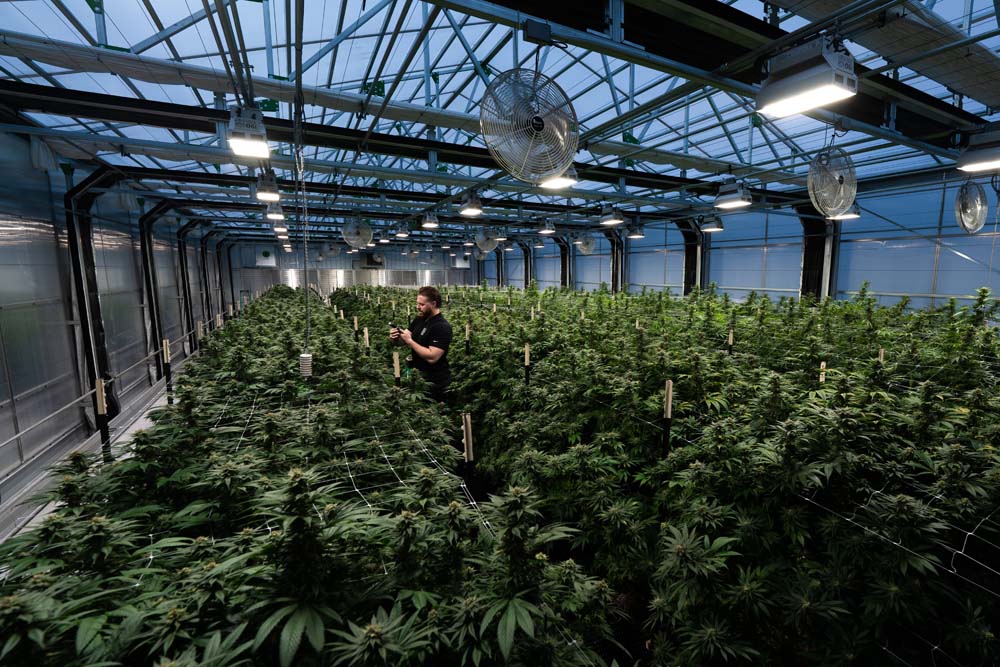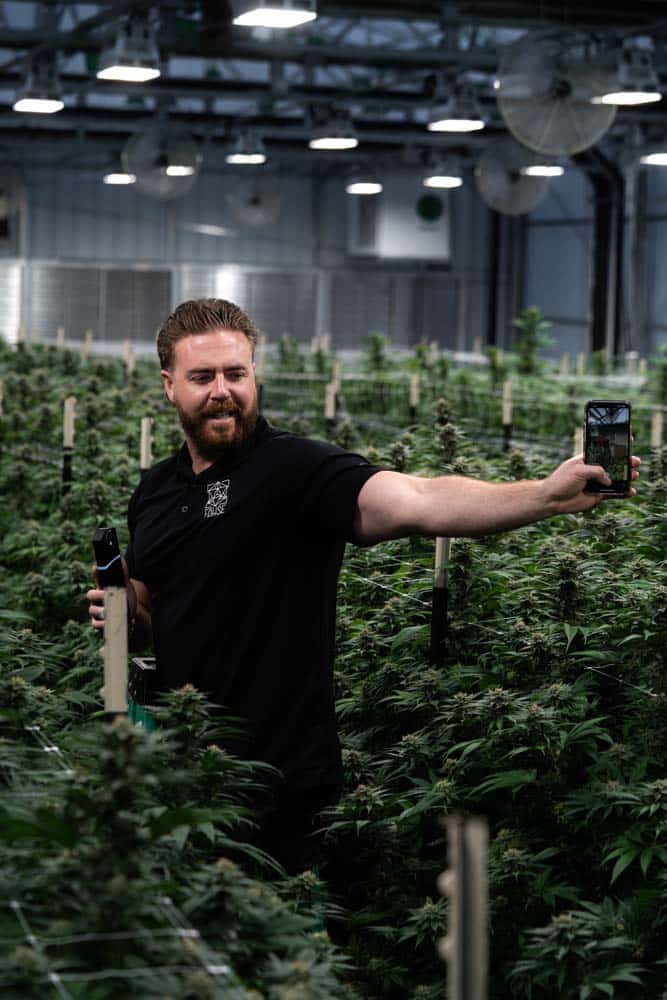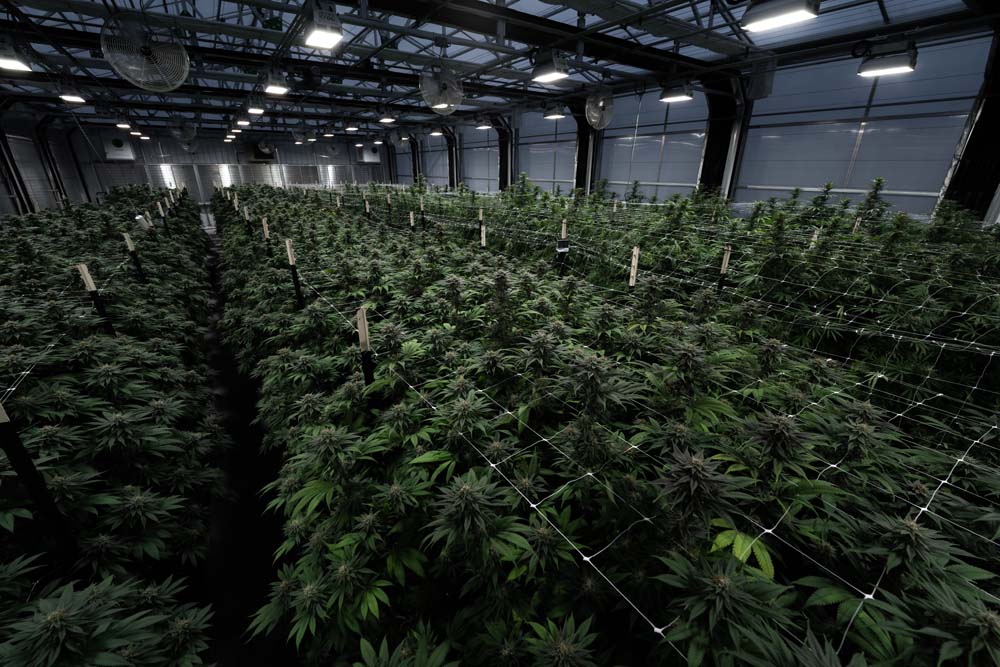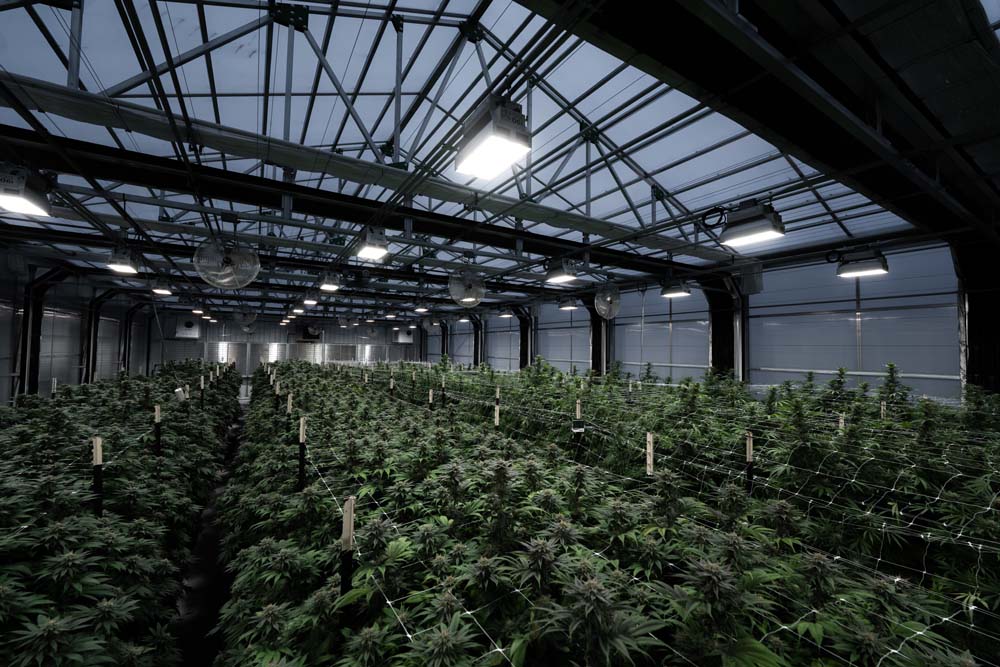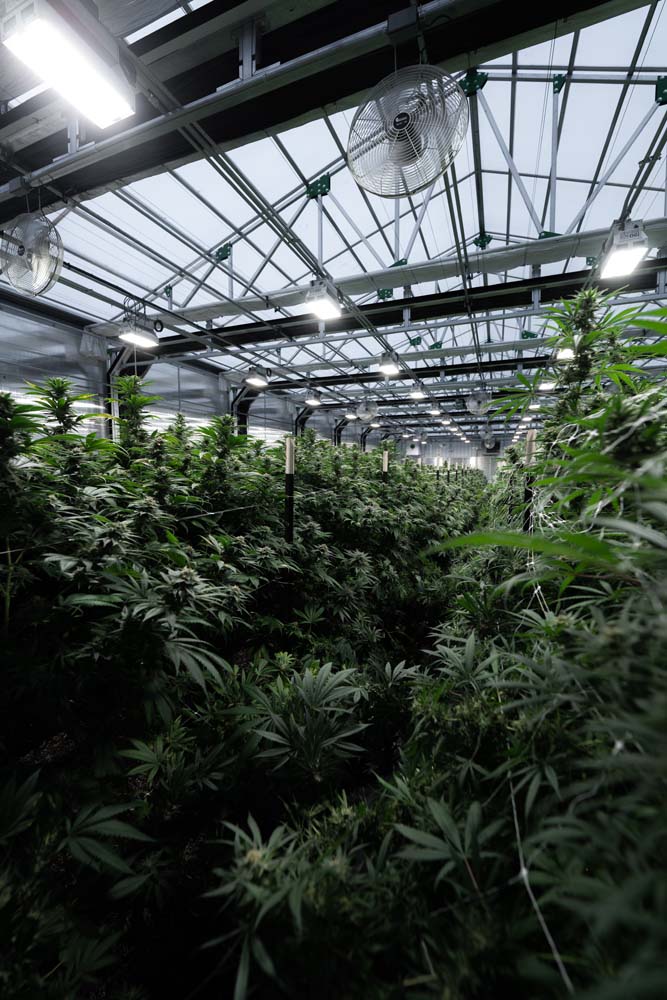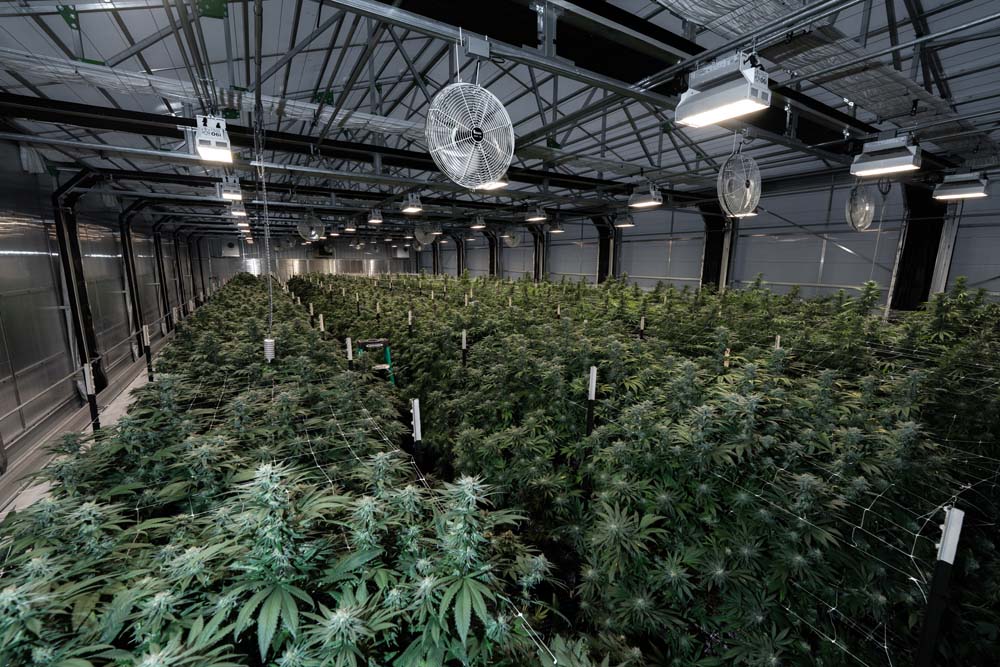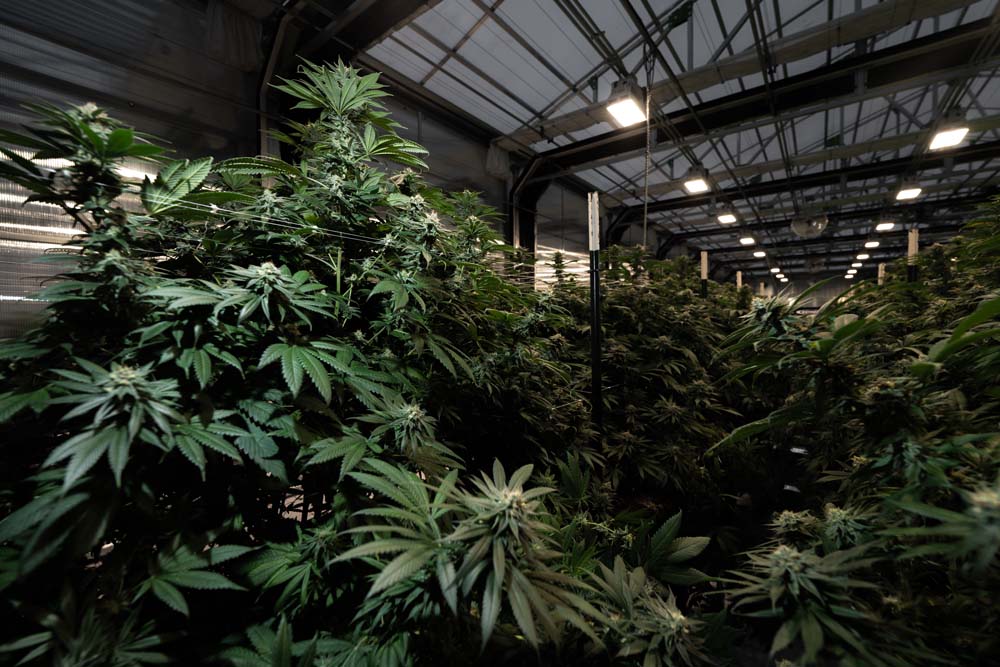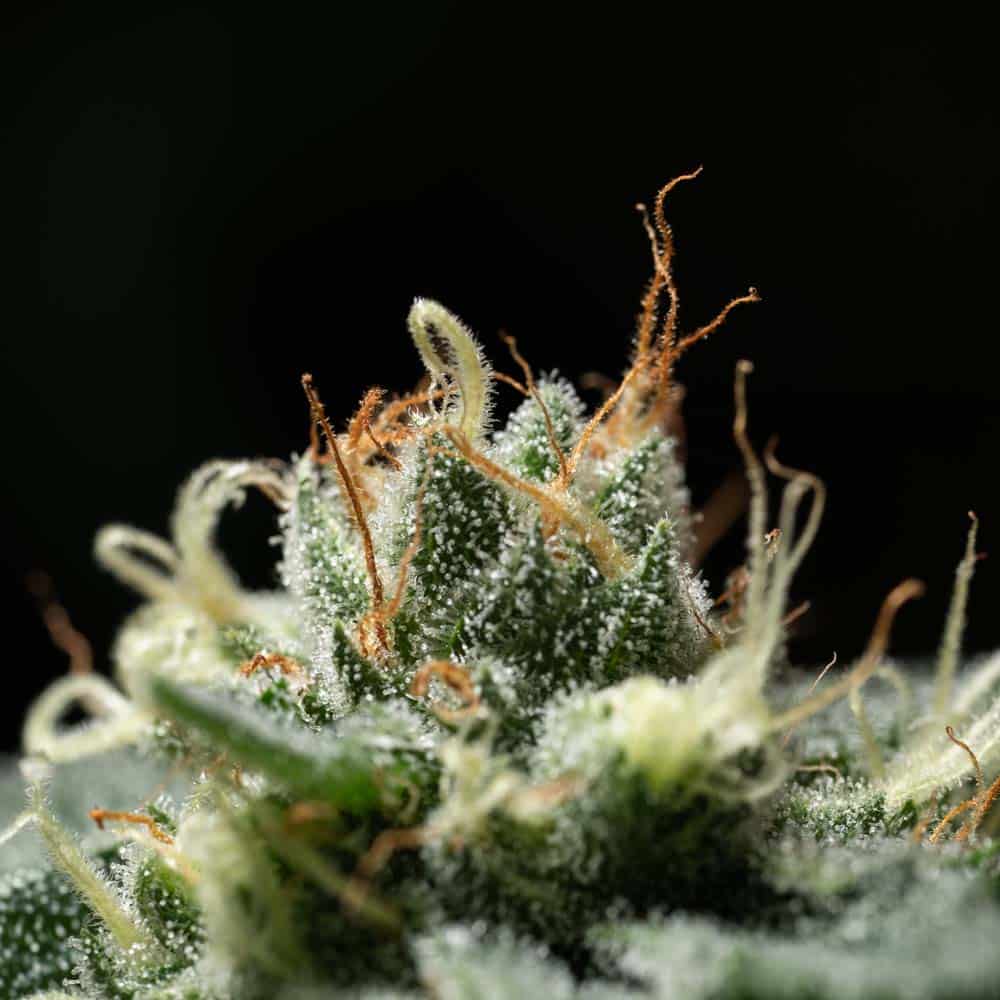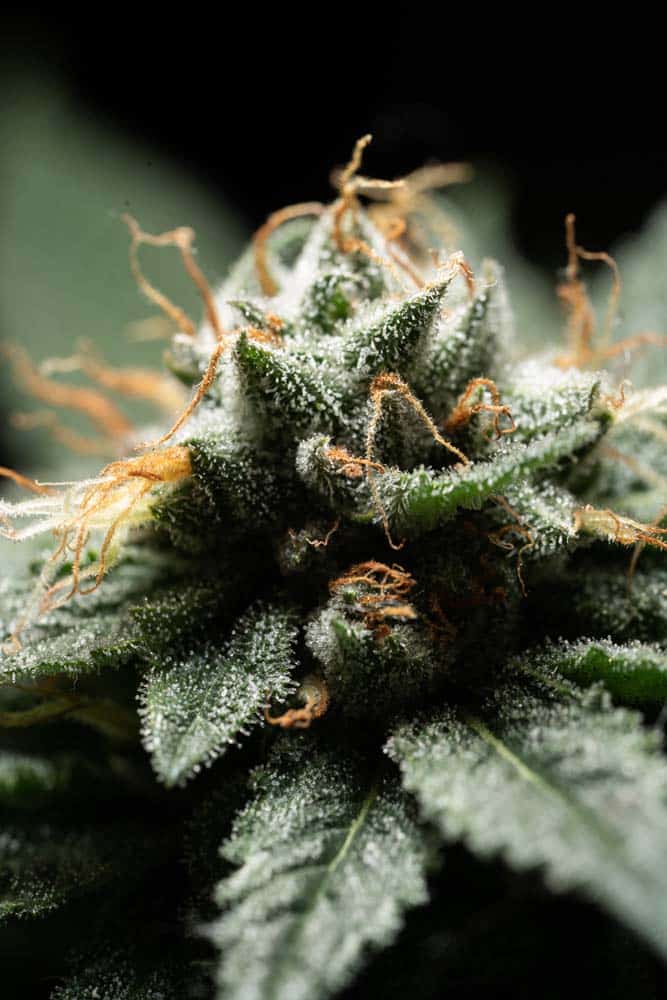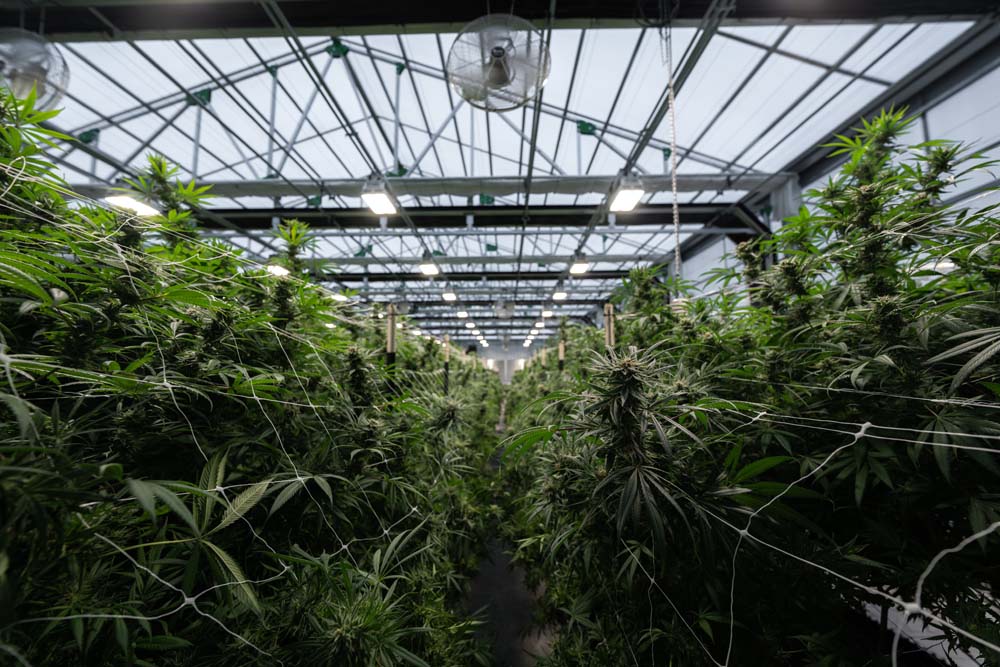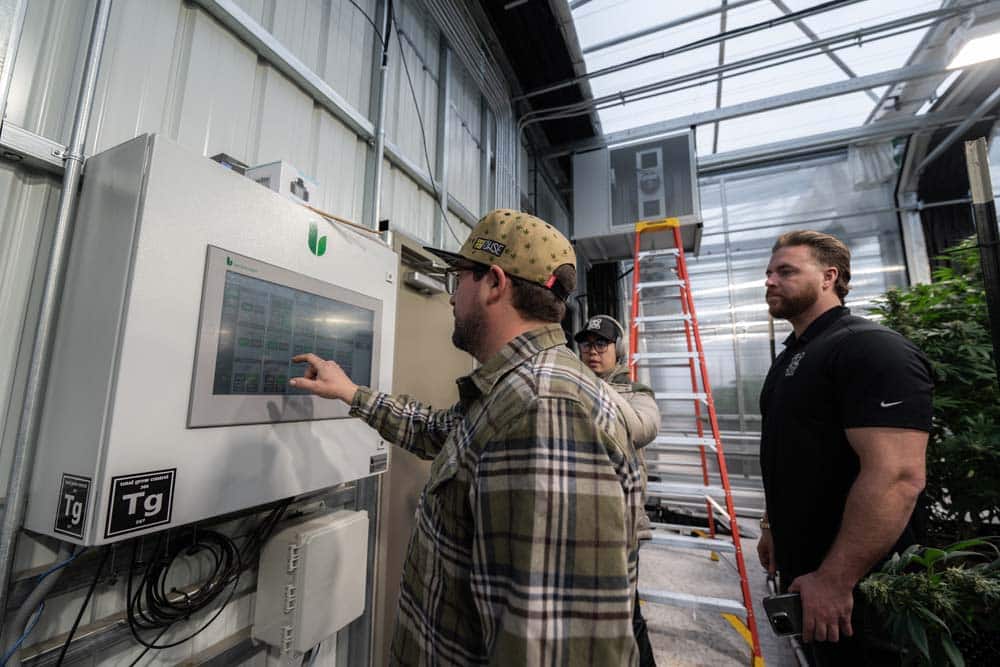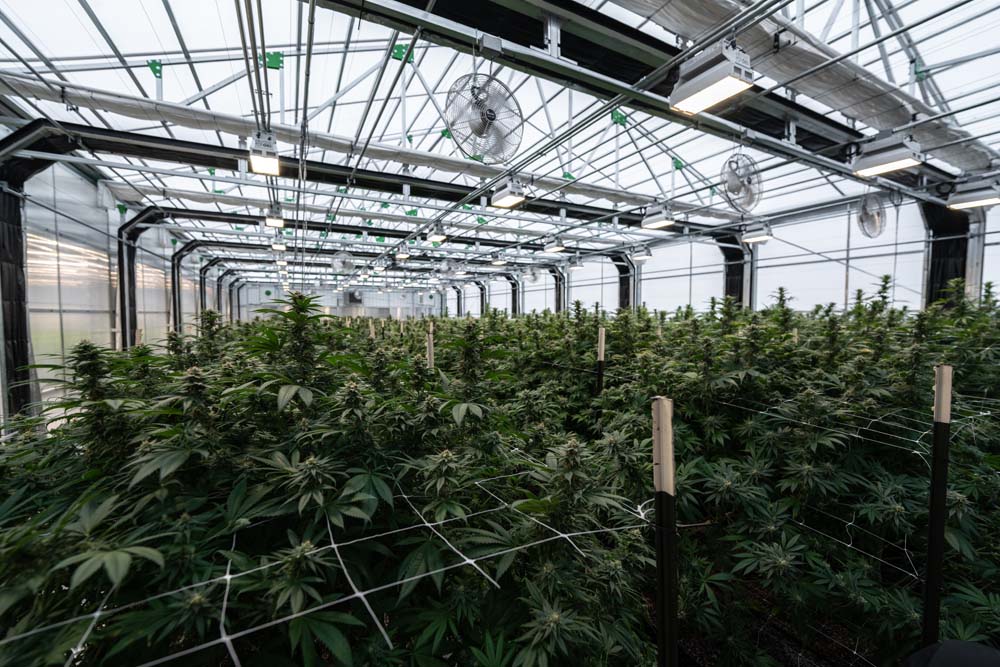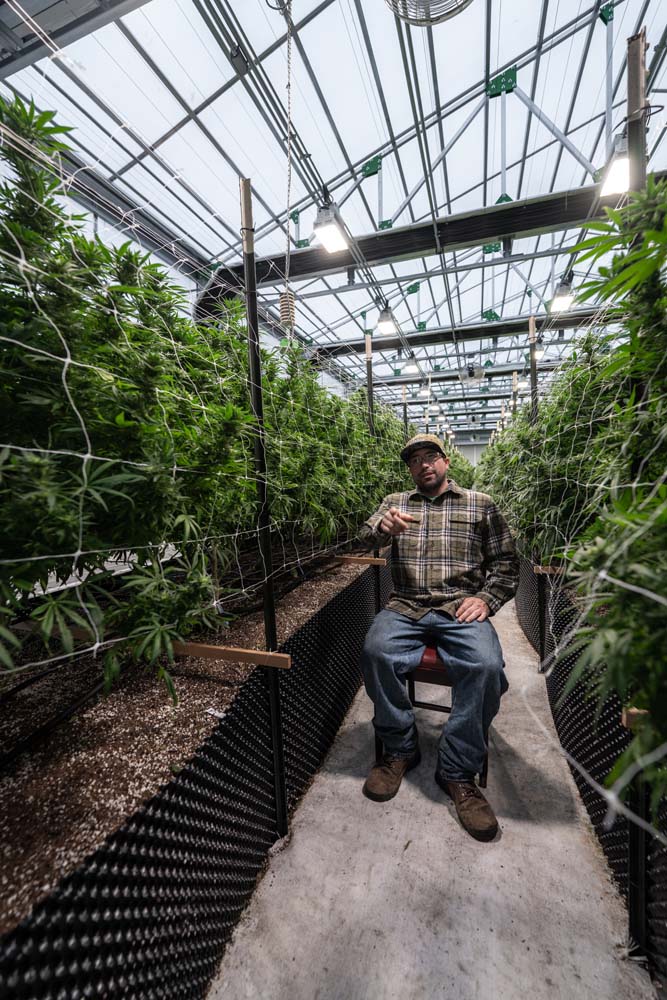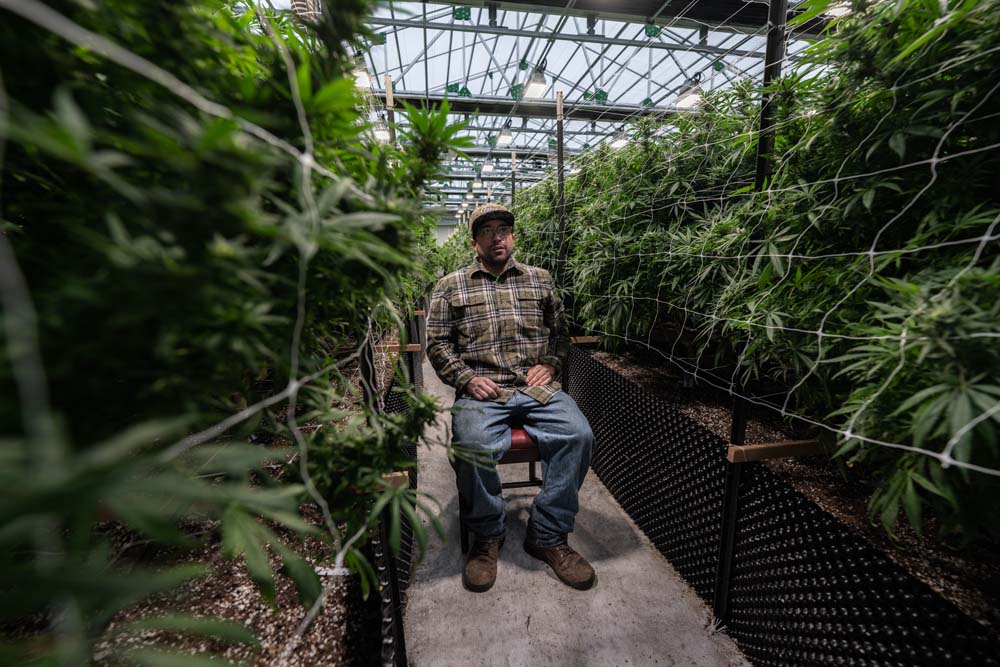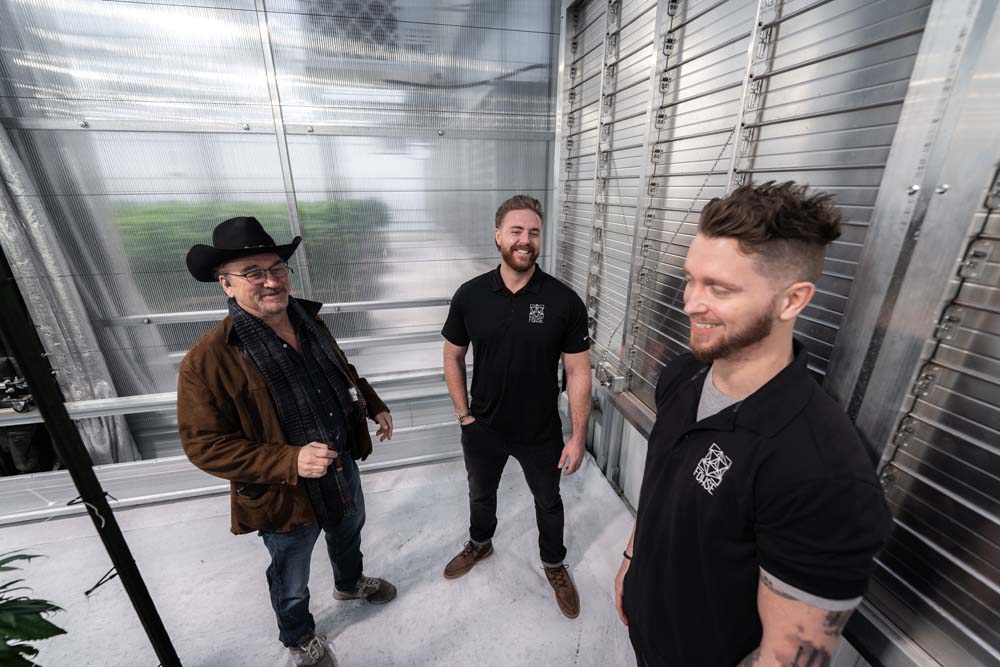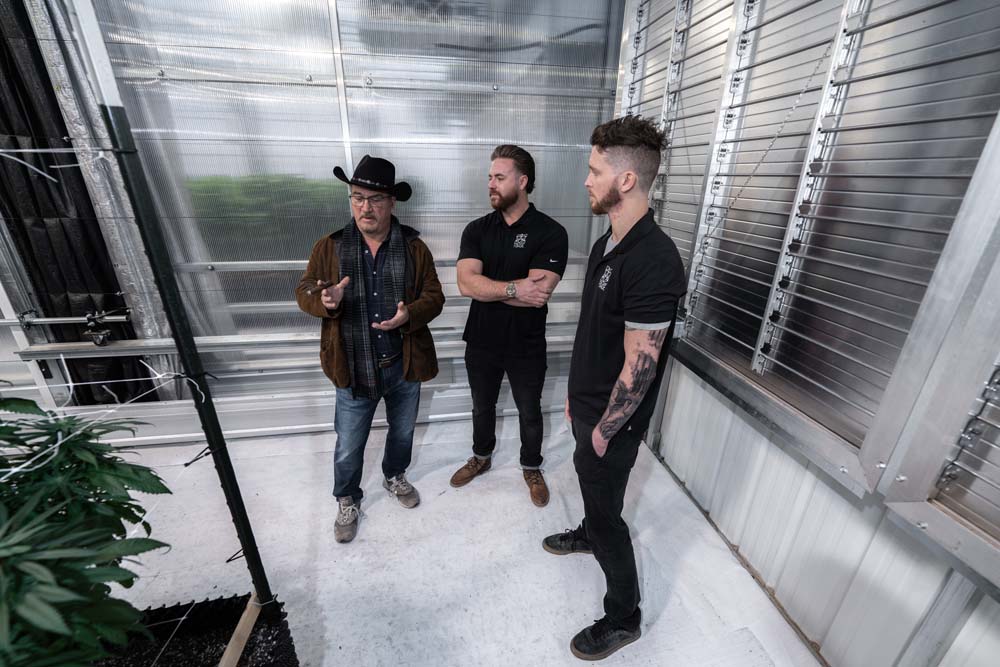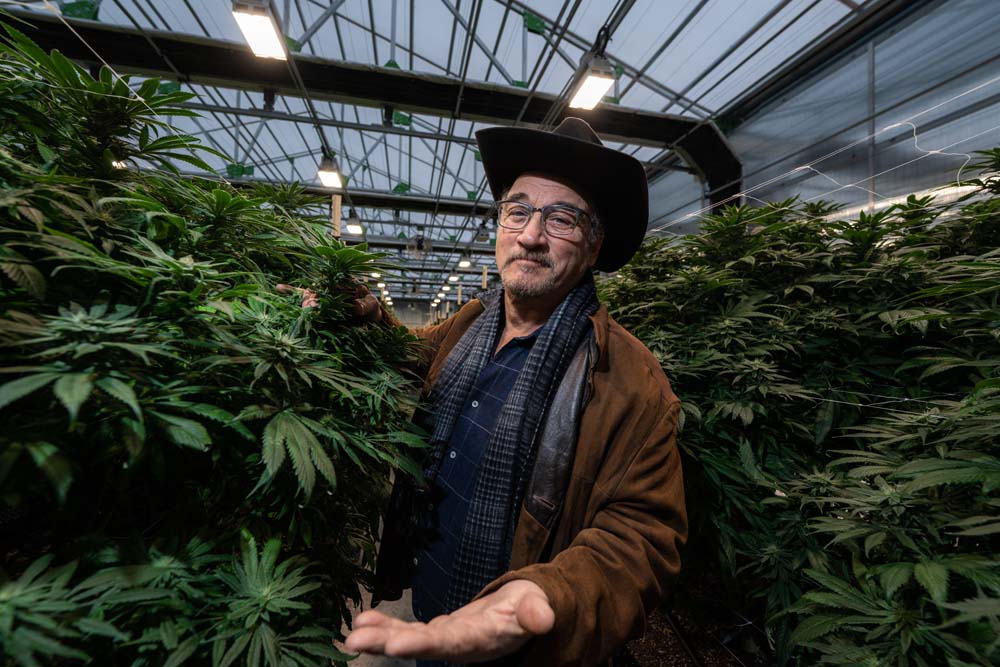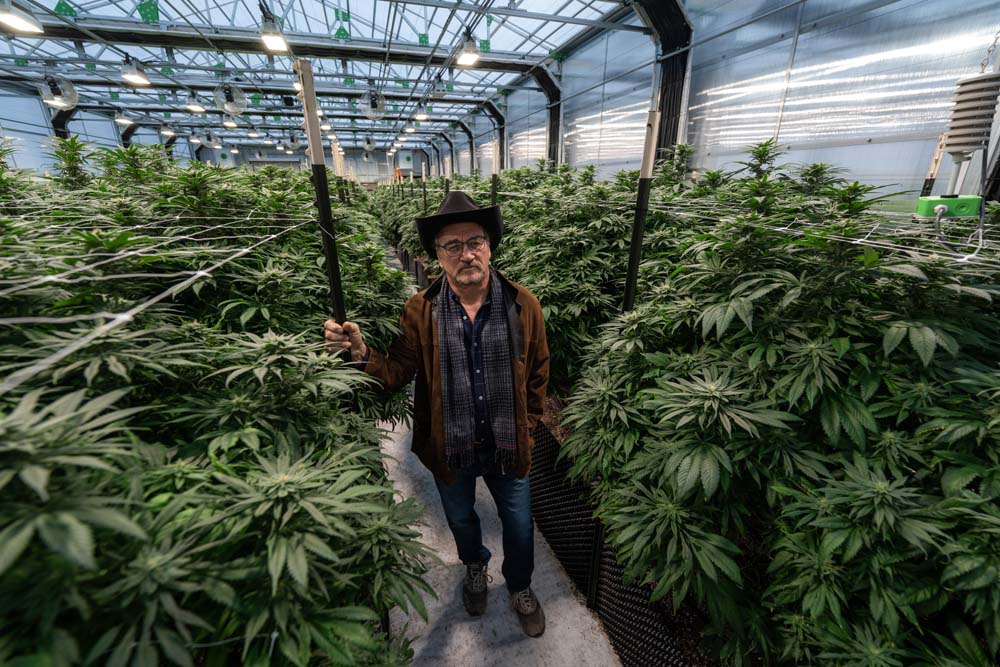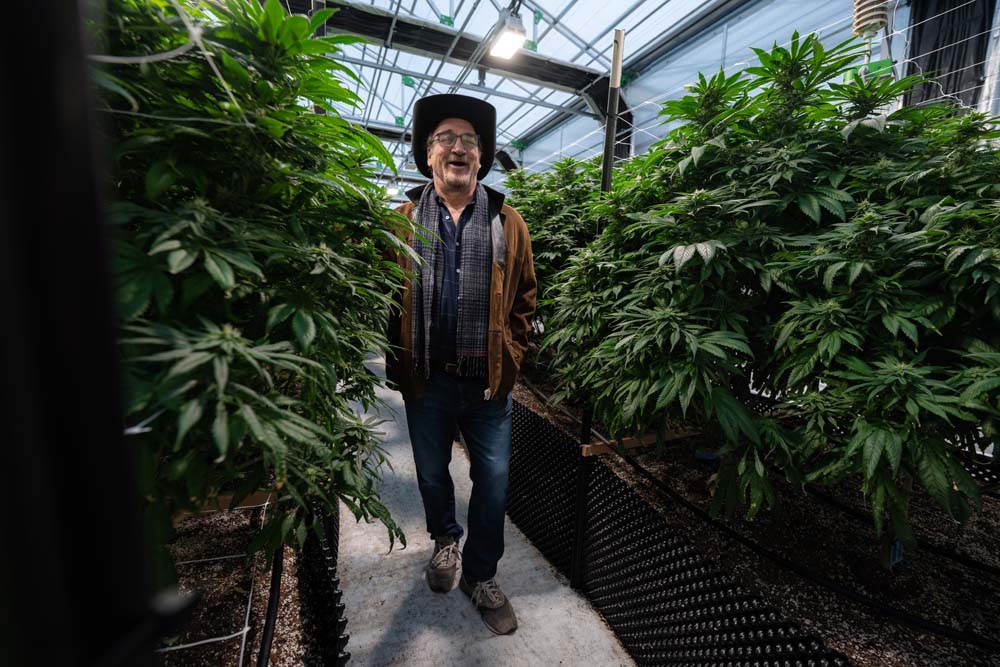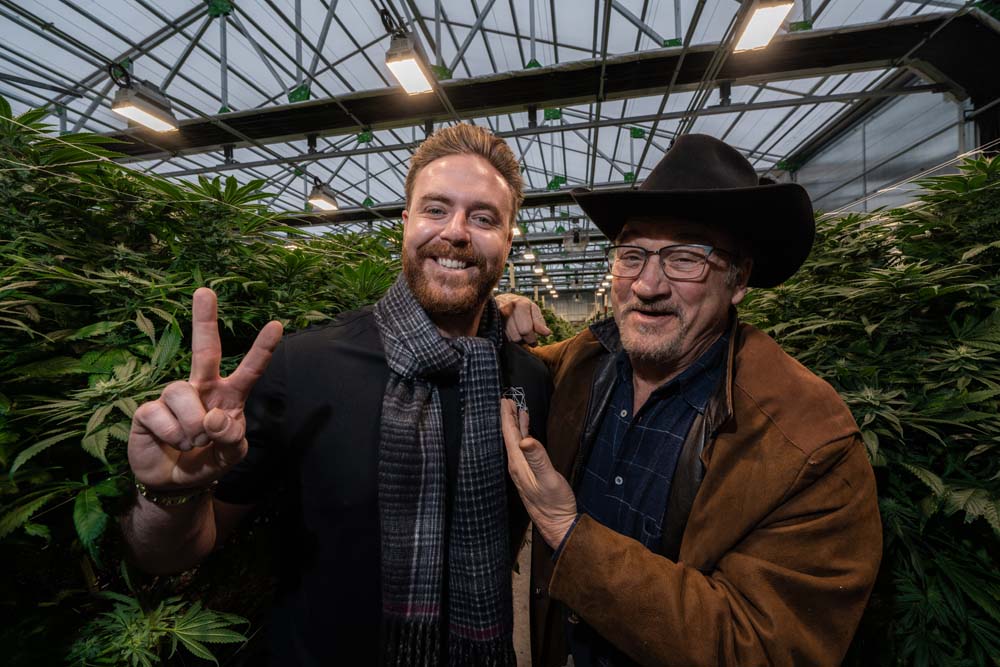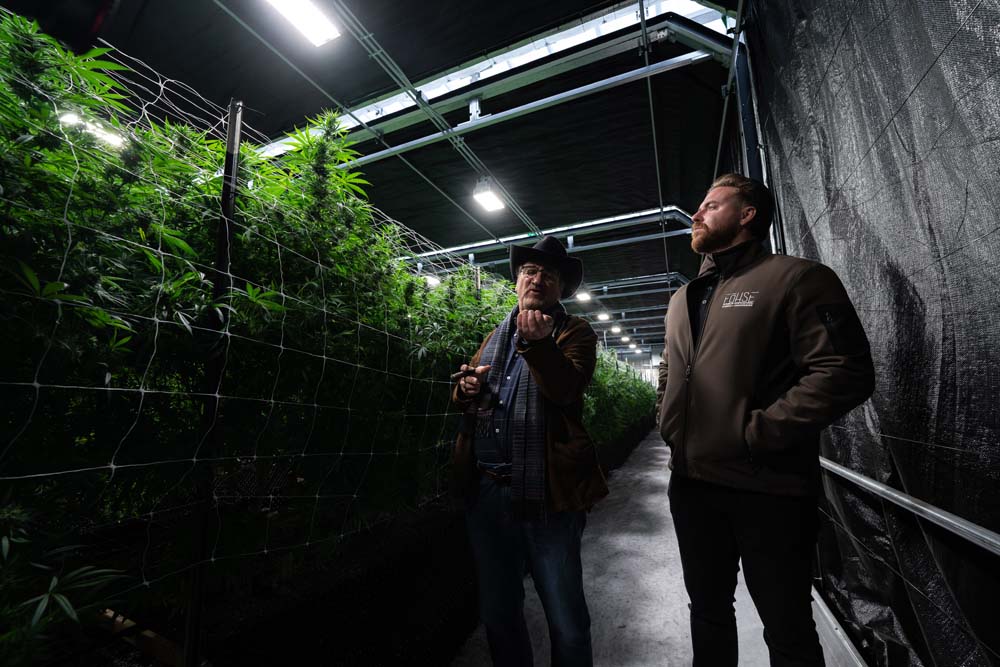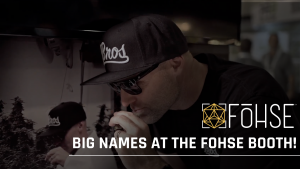CEO and master breeder Rick “MrSoul” Campanella of Brothers Grimm Seeds is no stranger to futuristic thinking and innovation. In this episode, Mr. Soul revisits his prohibition days, creating BGS and exclusively producing FEM seeds. What’s next for Mr. Soul and BGS? Find out here!
*Disclaimer these were transcribed from an audio file. There may be dictation errors and misspellings due to direct translation. Dictation Error(s) - The dictator himself / herself makes a dictation time error which simply gets transcribed verbatim.
Speaker (FOHSE)
What’s up everybody? Welcome to the future is back with episode number three and today we have a very special episode. Obviously starting out with our first family we have Mr. Mike Howard, who is our cultivation specialist here at FOHSE. At our headquarters, we also have our president Mr. Ben Arnet and then last but certainly not least, we have CEO and master breeder for Brothers Grimm seeds out of Colorado. none other than Mr. Rick Campanella, aka Mr. Soul. So how are you today?
Speaker (Rick Campanella)
I’m doing great. How are you today, Leo?
Speaker (FOHSE)
How was your flight here? He just got in town.
Speaker (Rick Campanella)
Man, what a breeze you know, you jump on a plane in Denver. It’s like getting on a bus and going downtown. I’m in Vegas. You know, I’ll spend the day here and I’ll be back tonight and sleep in my own bed. So what a world to live in our flight. Total hour in almost two hours 50 something good, good. Good. So how are you feeling today? It’s Tuesday, full of energy, you know, everything clicking on all cylinders. I guess you know, when you have your grow going smoothly and your operation at home is? You know, you’ve got peace in your life and happiness. You know? I’m just a happy camper.
Speaker (FOHSE)
Let’s start there. Happy camper Rick Campanella, who is that?
Speaker (Rick Campanella)
Well, you know, I grew up in upstate New York most of my life, went to college there and started smoking marijuana when I was 14 years old. My uncle had, you know, he was five years older than me. He was my father’s youngest brother. And I always looked up to him. He kind of looked like John Lennon. His name was Frank Campanella. And he was the cool uncle who and you went to visit your grandparents, he ended up in his room, checking out all the shit on his dressers and his drawers and stuff. And one day I came across a little bag of weed and one of his drawers. I said, Whoa, check it out. What’s this? And he says, oh, that’s marijuana. Have you ever? Have you ever smoked it yet? And I said, Well, my friends and I have been wanting to and trying to like, you know, we go out in the woods and are looking for wild grow.
Upstate New York, wild marijuana. You know, so he says, Well, this here is Acapulco gold. And it’s really good stuff. So here, I’ll show you how it works. So he showed me how he rolled a joint and we went out in the backyard and smoked the joint. And by the time we were halfway through smoking it I mean, I just felt like I’m in a dream. And I’m gonna wake up later. And this is all going to be something that I’m going to look back on that never even happened, you know, that sensation of being in a dream. And my body felt tingly. And you know, just giggling and laughing and stuff. I just like this for me because I’ve been out in the woods with my buddies, you know, and the kids in the neighborhood. And you know, smoking cigarettes and drinking beer was like, that didn’t really do anything. For me, I couldn’t smoke a cigarette, it made me sick. And drinking made me sick the next morning, and here’s something that made you really happy and made you feel really creative and cool. And you didn’t have a hangover. The next day when you woke up what the heck was not to like about this, you just loved it. And so it was always in the back of my mind. As you know, marijuana was my thing, you know, my go to substance of choice, if you will. But I was a serious minded student, and I was wanting to learn and get better at things. And I was studying guitar and voice and being in music at the time. And so about 20 years old. Then I realized, you know, as a machinist, which I had trained to be at that point, I kind of reached the peak of what I wouldn’t be able to do. And I was still very young. So I said, should probably go to college. And I had a girlfriend at the time it was 1980. And she had a younger brother who brought home the Rubik’s Cube, right. And remember the thing still around today is very popular, right? So I looked at this thing, and I started playing with it. And I said, you know, the way it turns, it’s like they’re on axles, right? And the center cube is like the pivot of the axle and split, everything spins around that. So the color of the Center on each face has to determine what all the other colors would be. And so once I had that concept in my mind, and I started applying, like, solve the first layer at layer, like a layer cake, and that was easing in the middle layer and then the bottom layer, and then it’s done right. And so I developed some little algorithms in my mind as to how to move cubes from one place to another and stuff. And long story short, probably too late for that. I realized that I have the kind of mind where I should probably be an engineer and I got 100% on my physics exams and through all my tests in high school in math and physics. So my mother said just don’t become an engineer, you know, so I’m in school, I get a bachelor’s degree in nuclear engineering, and there I finished number two in my class at RPI. It’s a pretty well known school similar to MIT or what have you. And but in upstate New York, and since I was going into a master’s degree program, and I was in graduate school with a couple other dudes, you know, we were renting a house together and there happened to be a walk-in closet in my room. So I knew I was going to be there for a year or so. I’m going to turn this into a grow room. So I wrote to Amsterdam and bought seeds and continued to write to the owner with questions and things that I was observing. And he was kind enough to keep writing back to me, a guy named Cash. And so he offered me a job when I got out of college. And, you know, we’re so this is the development of where the MR soul part of my personality comes from, in the, you know, I’m studying to be a nuclear engineer, and I get my master’s degree in nuclear engineering 1987. And I’m hired by a company in Connecticut to go to work for them. And I’m working an eight hour day, five days a week because a tie and a shirt and sports jacket and engineering and talking to everybody around the watercooler, you know, figuratively and at night, I’m going home to my basement, unbeknownst to me, and I’m straight people, right? So
It was a funny double life I was leading. And the job that Keisha offered me and I eventually decided to do was to become a distributor for their seed company, so that they didn’t have to send every pack of seeds, like you know, you got some packs of seeds from my company in front of us here. Imagine if each customer had to be mailed one by one, their products from Amsterdam and had to go through customs. And you know, it’s going to take a long time, and probably going to get snagged half of the time, people won’t get with it. So their solution to that was to have an agent inside the United States that could take a large shipment of their seeds, and then send them to all the individuals. And so that was my night job. You know, I was coming home from work at night and preparing packages of seeds to be sent out to the various people that ordered them from Super sativa seed club. And I was the US distributor for a few years and then got married to the wife at that time who I eventually had with my two children Damien and James. Their mother didn’t like pot. So I had to kind of quit that for about five years until she decided she wanted to get a divorce. And you know how these things go, we had five years of marriage and two kids and she’s like, you’re not my prince charming. And I don’t think you really love me and all this kind of whatever. So that’s another part of the development of where I got a springboard from out of that marriage where I couldn’t do this. And I moved to Belgium,
I had a job there as a nuclear engineer during the day and I was racing bicycles as that was the sport I was into at the time. And so this is the lifestyle that I was getting some European experience, I learned to speak French and just had, you know, great experience with European life and being in contact in Belgium being so close to Amsterdam, you know, in Holland and being able to take a train anytime I wanted to go up into a coffee shop and get any kind of weed that’s available. And I had some great experiences of going up there like once a month or so and spending the evening going from coffee shop to coffee shop and buying weed and you know, just hanging out and enjoying the culture because I really do enjoy the culture there in Amsterdam. So that got me to the point where I’m now finishing a two year contract in Belgium. And it’s around 1996. And I moved back to Boston, I say back to Boston, meaning only that I came back to the United States. I have never lived in Boston before. But my Belgian wife at the time, thought, hey, Boston would be a cosmopolitan kind of place where I would feel plugged in and there are people who are multilingual, like myself and so on and so forth and turned out to be a good place for us to land on. Because then I planted the seeds that I had bought in Amsterdam. In thinking that I’m going to come to the US I’m going to need to grow my own now I won’t be able to go to coffee shops anymore, and it’s illegal over there and stuff. So
I bought seeds in Amsterdam. But while I was there, I went to a coffee shop called Sensi smile. It was just down the same canal, a few doors down from where I bought the seeds at Sensi Seed. And I bought a small bag of Jack hair or weed and broke it open at the table to roll a joint. Few seeds rolled out of it. And I was like well, I’ll save them and put them in the bag with the other seeds that I bought. And, you know, we’ll see what turns out I didn’t think they’d turn into much of anything especially compared to the ones that I had to pay money for.
But lo and behold, I find this a group of plants that came out of those seeds to be the more impressive and really after growing. A lot of the strains that I had the seeds from Super sativa seed club I had quite a resume already of seeing amazing strains and knowing what they should and shouldn’t look like. And what I found from that bag seed was like super spectacular plants then the one in particular that ended up becoming the mother of Cinderella 99 I called her princess. I was telling you boys earlier before
When we came on air, but the story behind that was growing it in Boston, in the basement where we lived, I discovered that this thing is the perfect indoor plant, it’s compact, it doesn’t stretch so much that it gets out of control. And yet, the buds on it, it’s an ALEC a heavy, indica high. It was a very sativa-like high, you know, which would be something that from the Mother, the jack hair, her mother that the seeds had come from probably that, you know, that side was that cerebral, uplifting, high. And I just loved it, it was like you got a sativa result from an indica shaped plant. And the yield was good, the flowering time was short, it had just about everything you could ask for, never hurried. You know, everything about it was just exactly checked all the boxes. So at the time, we were all growers, we’re, you know, it’s prohibition time. And we’re all basically we have to hide our existence. And even when we wrote to each other a lot of times it was with encrypted messages and your emails and shit like that. Does anybody go to those lengths? Now, you know. And during that time, it was almost like being in some sort of International Spy Club or something, you know? Yeah, you know, I trust you, man and everything. But here’s the you know, we’re gonna send messages encrypted and stuff, that’s just to give a flavor for like the paranoia that surrounded this trade at the time in the 90s. And living in America, a place like Boston, Massachusetts, it was totally illegal, you could do 20 years for what I’ve had in my basement easily, you know, if I got caught. So along comes a time where I’ll bring into the picture, the formation of Brothers Grimm as a seed company came from me having that plant and wanting to create seeds that I could share with the other people that I was communicating with on those message boards and, and in those private clubs that we’re in. And so I got the idea to breed a seed line that would replicate that plant. And the idea that I had was, your mother gives you half your genes, your father gives you half your genes. So if I start with this clone, and by you know, the magic of having indoor lighting, which is what you guys do, right, you know, you’re giving the world something that even only a couple of 100 years ago was impossible, you couldn’t keep a clone and vegetative state because it’s the weather, the seasons are changing, it’s fall, it’s gonna flower, it’s gonna die, right. But with lighting indoors, making it such that you could keep a vegetative room and a flowering room at all times, I could keep this one female that I love so much in vegetative state with only flower cuttings from her, and always have a source of those cuttings. And that would have been something that would have been enough for myself, but I wanted to share this with the other guys, like I was saying, and so I said, Okay, how can I make seeds that will replicate this female, so I said, half your genes from your mother, half your genes from your father, I had a male that came from some of those seeds that I bought in Amsterdam, and it was a Shiva skunk. So I’ve crossed the Shiva skunk to the princess female clone, to make seeds. Now that first generation obviously is going to be 50% Princess and per 50%, the Shiva skunk. But if I take one of the males that would grow from those seeds, and cross it back to the original Princess, now I would be creating a generation that has 75% of princesses genes, because she contributes 50%. And since the male had 50% of her genes, half of that’s 25%, right? Because he split the genes when it goes to the offspring, so that next generation would have 75% of princesses jeans. And then if I did the same thing again, now it goes up to 88% and 94%, and so on. And so by the time I got to 97%, Princess jeans, I called it Cinderella 99. And it happened to be 9099 at the same time, print sound design, we’re gonna party like it’s 99. Right. So everything was well, you know, it was all happening right around then. And when people got those seeds and still to this day, I mean Cinderella 99 is known as one of the most stable, reliable, indoor cultivars. It’s basically like the Holy Grail for indoor plants in the sense that you get that amazing high flower to leaf ratio, no hermaphrodites and great resin production, uplifting cerebral high. The only thing that you don’t get as if you wanted is a couch lock, you know, so it’s just not that kind of thing.
So that’s how I got to start the company because with the excitement that surrounded the Cinderella Project, another guy on one of the forums his name was he went by the name of sly. His real name was Ron Wiseman in real life. You know, we can say that now just saying my name is Rick Campanella. I would have never admitted it then. Right. But Ron, and I, you know, he called me up one day and said, Hey, I got an idea. Why don’t we start a seed company? You’ve already created those Cinderella seeds and you know, we’ll, we’ll do others and I can contribute some you can contribute some we’ll have this lunch. I said, Okay, sounds good. Let’s do it. And so we decided to call ourselves brothers Grimm, you know, because they had this grim determination to make this thing work, right. And we were like, bros. And so that’s how the whole thing started. And we told each other let’s make an agreement that like, we’ll do it for five years. And if we were still getting away with this, after five years, let’s pull the plug anyway, just to let you know, it would be like, you’re pushing your luck too long. You know what I mean? And so right around that time, he sent me a message or called me. I forget which, and said, I think it’s time we shut down. And he was starting to get nervous. He had some paranoia about some package that he thought was intercepted by the law. I was probably just bullshit, you know, but at the time, we really were paranoid, right? Because it was serious. And so not only did I shut down the garden and close down business and stop communicating with anybody in the cannabis world, I pulled up stakes, sold the house and moved to Europe.
So I go, and I live for a couple of years over there, you know, and, and then I come back, and I’m still an engineer and growing didn’t seem like it was going to be anything that I could make any money at. And I didn’t think about restarting the company for a while, because I was working some pretty good jobs. And with children and everything, and ex wives and things being with AR, you could end up running afoul of something there. I was just playing it cool and keeping my nose clean. And I was on the sidelines watching, you know, as legalization was building momentum, and I’m like, it actually looks like that, you know, they might actually legalize pot. And then Colorado, I think was the first two years into there, having made it legal, I realized, like, It looks like it’s gonna stick, you know. My job wasn’t engineering at the time and was not interesting to me, the people that I was working with weren’t appreciating me, and vice versa. And even though there were many elements of that job, like flying to France every other month, and you know, working with French people and speaking French, and that kind of thing, it was attractive to me. But in the end, you know, they decided that they didn’t need somebody like me around anymore. And on the day I was let go, I could have like, really had it out with my boss but super mad at him. But if I met the guy again today, I’d run up to him and kiss him on the forehead and say thank you for letting me out of that death sentence that I was serving over there.
Speaker (FOHSE)
So considering your class, from home growers all the way to commercial commercial growers, and then now earlier, you mentioned the majority of them being commercial growers. Do you recall the first aha moment when you locked in and said that this was good. From a customer, whether it was a home grower or a commercial grower?
I think just the initial response to everything that I was doing when I was in those private clubs in the late 90s. And living in the prohibition era. The guys, I knew they knew what they were doing and that they had some good cultivars themselves. But then when they would send me something, or I would send them something, I’d always get these like, holy shit dudes, you know, like, the guy would make a post on the message board, like I just got something from Seoul and the shit is like, you won’t believe in it. It’s like in another dimension. And so I kind of realized, like, I think I’m onto something very different from what everybody else is doing. And when I do grow strains from other producers, I do seem to think like me, no, that’s really just not like Brothers Grimm as a bear. It’s not our type of weed or the growth characteristics are something about it. Well, it’s just recognizably not our thing. You know, I think maybe it’s the high flower to leaf ratio that our plants hardly need to manicure. There’s very little leaf, it’s all flower, and the short flowering time is the compact nature of the structure of the plants and stuff. It’s all basically around that same principle of when I created Cinderella 99 You know, every breeder in any kind of domain of breeding be at horses or porpoises or whatever the hell you’re breeding, right. You always have this ideal porpoise in mind that, you know, like, I want to make them all like that. Right? And so I think it’s my personal choice of how I choose the plants for the parentage that gives you the result that they have those characteristics in common. And some of the newer stuff you know, we can talk about and how things have developed from those days to what we’re doing today. And like you mentioned, the commercial growers provide me a much larger population into which the genetics go and I can observe and get feedback from, we were talking earlier about the best testbed for anybody’s products, whatever you make, whether it’s LED lights, or you’re breeding seeds, your customers will be the ideal people to tell you whether you’re doing that well or not. And so when I do testing of our seeds from Brothers Grimm, a lot of times, it’s just a mass giveaway, that, you know, those folks who get the free seeds will write back to us and tell us how they, what they observed and send pictures and so on. And when I see a consensus among all of our customers, that the people who are testing the new seeds are all in agreement that they like them, I know that they’re okay to sell. Because my own customers have told me they like it, it sounds almost circular, but it’s the perfect desk testbed.
Speaker (FOHSE)
We were talking about that earlier, when we were outside helping folks build a lot of our features functionalities, like the spectrums had a client say, Hey, I think we could do some, you know, I want to try this spectrum. Can we do whites and blues? And, you know, alter this a little bit? And absolutely, obviously, like we’ve discussed before being the engineering firm, now just white labeling products, were able to go yeah, let’s populate a board, slap it underneath, you know, to a power supply, you know, make a custom light for you. And we can do it inside a couple of weeks, essentially. And whether it be custom spectrums are seven foot light, or, you know, features like the Heat Sensor, I mean, we had no idea, right? Yeah, I guess that’s a good idea to have the lights dimmed down, if your age is back and everything else shuts down. You don’t want your light sitting at 100% Just cooking them. So I mean, a lot of the cool stuff you see that FOHSE has done has been kind of like that same process where we just go in and, you know, tell us what you like, tell us what you don’t like, you know, we’re not gonna get offended, let us know, we’ll work on it together.
Speaker (Rick Campanella)
Yeah, like the best feedback you can ever get from your own clients. And by designing something that works for them, you know that you’ve just designed your product to suit the customer, again, circular logic, but it’s perfect, it makes perfect sense.
Speaker (FOHSE)
And it builds brand relationships, you know, like, if they’re pleased with the product, why would they go anywhere else, you know, like, you get everything you need from you.
Speaker (Rick Campanella)
And I think it’s got to be very rare. If you find a light manufacturer who’s going to customize anything for you. Usually, it’s out of the box, I mean, you know, you put the Lego up there Legos, buddy, I mean, you could just stick them, stick them where you will put them together any way you want. But customize the way you’re on your own from here. But that’s great that you’re still you know that you have the brainpower, the expertise, you know, the engineering abilities to get behind the suggestion from the client and be able to act on that and improve your own product. And also customer it’s more satisfied, you know, in the end, and you’ve learned something, they’ve learned something. And I wanted to mention, like you guys are LED light guys today who I think you know, stands out amongst all the other producers and is what brings me here, I’ve never been in any association with LED before. But I think that time, I guess has matured to the point where you’re doing the right things that I think I was objecting to in the early days when I said, you know, really doesn’t seem to impress me, because I was saying how I walked into a lot of grows, and the lights all look purple, and the plants look sick. And I’m like, you know, the proof of the pudding is the plants should look good, right. And so I don’t know what you guys are doing with these LED lights. But so I’ve always been an HPS and a metal halide guy. But now when I start to see what you’re able to do, and then I look into the details of why it’s working, and I talk to you all, and I see oh, these guys are actually engineers, and they know the science behind what they’re designing here were probably in the past there were just rich guys buying light companies and trying to sell them to make money or whatever. So this is what separates, you know, really good producers of any product is caring about the product itself and how it suits their customers. And so one of my huge objections earlier on when I learned about LEDs was that unlike an ATI D light, which was a high pressure sodium or metal halide light, which back in the day, you know, I’m 62 years old right now, in the 70s and 80s, when I was first starting to do this sort of thing, that was the only kind of light available and we didn’t really think about it too much. You just hung the light and it worked right. The earlier incarnations of LED seemed to have so much flexibility that was actually working against the customer and they were not able to tune it correctly to give them the proper results. And that’s probably why I walked into so many girls where the lights look purple, because I didn’t know how to adjust them right to make them. You know, I think a light probably should look white or yellowish, right?
At least that’s what I’ve been used to. And so now I’m
noticing that you know the the tune ability is less free. And there’s more of a suggested settings that you can put them to like on your lights, you have the spring and the summer in the autumn settings, which makes perfect sense. Because then you know, we’re all as cannabis growers very aware of what week we’re in, you know, you always see that, like, here’s my princess, Hey, is that four weeks? Isn’t she stacking those kinds of, and I mean, I’m guilty of Mike’s. We all are aware of exactly how long the plants have been and what cycle it should be in. And so of course, switch to the next thing when the time comes, right, just like you might change your nutrients as you’re going through flowering, and so on. So I think that those are one of the real key things that have made it where this is something that I can embrace now, and we’re gonna be doing some growing with your lights at my own facility and breeding for seeds. And we’ll see things that you might not see, excuse me, from your clients who are growing for flower, because you know, they have different criteria that they’re looking for, and the output of their crop versus me growing for seed, I’m looking for, you know, number of seeds already healthier, you know, that kind of thing. And not some of the things that the other guys are looking for, necessarily.
Speaker (FOHSE)
Yeah, we work with a lot more cultivators for flour than, like you said, the seed production, but the couple that we have worked with so far, and that’s why I’m really excited to see what he can do, because of the amount of data he collects and his scientific approach. And just again, his experience alone is phenomenal. But like Green Bodhi and Umami Seeds, there’s a couple other guys that they’ve traditionally HPs growers, or using a weaker led, they put up the three eyes system, and they’re seeing healthier seeds, they doubled their seed production, which again, I mean, in, in theory, it makes sense if if you have you know, more like more photosynthetic energy, more photosynthesis going on in the plant, if you’re going for flowers to create more flower, if you’re going for seeds, it should create more seeds. So it’s gonna be fun to start collecting more and more of that data, as obviously, the majority of our clients are cultivating for flour, not seeds, but being able to build up that database of geneticists who are seeing absolutely ridiculous, ridiculous results, the same approach is gonna be really fun.
Speaker (Rick Campanella)
Yeah, I think that that’s a great point that, you know, both outputs, seed or flower both depend on the plant being as healthy as possible and creating a yield, either in weight of flour, or in number and quality of the seeds, because maybe many of the viewers never grew for seed, and that’s normal. And the funny I’ll tell, I’ll tell you what’s really funny. Being a breeder is like when things don’t go well, you kind of kick yourself and you go, like, I’m so mad at myself, because I’m failing at something that like a novice grower would do by accident. Like when you don’t get the number of seeds that you wanted from a room you kind of feel like any dummy who doesn’t know what he’s doing could have gone in here. And like pollinated all these flowers would have been seeds everywhere. And why the hell isn’t it working for me? I actually had that happen to me over this past year in a room over and over my flowering rooms and like what’s going on here, the plants aren’t getting pollinated and making as many seeds as they used to. And it turned out that there was a friend of mine from you know, maybe six months before that, who had suggested to me that I put these little aerosol cans on the walls of the flowering room that would spray a little pyrethrin every 15 or 30 minutes and just as a what do they call that prophylactic effect in the room to keep any insects that might have tried to invent in invade the room at bay? Okay. sounded great in theory and said it worked really well for him. Of course, he’d never grown seeds. He always grew flower, right? So when you think about it, how does pyrethrin work? It’s this mist of sticky substance it’s in the air. And when it lands on a tiny insect, its feathers kill the insects. That’s how that works. Right? So how are seeds made? Well see pollen is floating around in the air like powdery dusty substance little particles, and then they land on the flower and then they send a littleroute if you will, off of the pollen grain into the OB you will have the flower and that’s where the seed is then formed right? Now if there’s a sticky Misty mist in the air, pollen is getting killed by the ship. Or maybe like condoms are being formed around female male can break through that barrier. So I changed so many things in my grow I mean, nutrients, reservoirs, pipes every now something down immediately worked. I was like, it was almost at the very end of it after changing everything. I mean, I got everything new. And then I look in the room, I got a little spray cans up on the wall, get those things out of here. And immediately everything went back to normal again, I was like, Oh, no wonder. But I never realized that. So maybe if you’re growing just for flour, you know, we put those little aerosol cans in your room. And if you get any Hermes, keep the seeds down. You got to look at it both ways, right? Just like I had, you know, that famous plant, the Mac one calculators famous maquon clone. And that thing is so resistant to being pollinated. And recently, I read that there was some scientific work done. Guys who do you know, the kind of stuff like DNA sequencing and CRISPR, and all that kind of stuff. So they look deep into it, they say it’s a triploid. And that’s why you can’t pollinate it so easily, right? Like, I’ve had a Mac, one plant in a room where it’s surrounded by four other plants, every one of those other four plants yielded like 4000 seeds each. And on the Mac, there were like three or five.
For what you can count on one hand, what how many seeds came off of that plant, and it was sitting in the same room as all those other plants getting pollinated all around it. And it’s comes out almost like syncing me. And I thought to myself, well, this sucks as a breeder, because even if the seeds turned out to be like amazing plants, how are you going to make any money selling five seeds from
you get a whole plant in the room for wasting two months of your time for him to make a pack of seeds, you’re never gonna make any money like that. But then it occurred to me like Well, one of the problems with being a breeder is I rarely grow flower that I can smoke for my own head because that space is so much better used by making seeds in there, right. But then when you get seeded weed, you can break out the seeds and try to save the weed just like we used to smoke in high school. But I’ve been spoiled since then, you know, like that should doesn’t cut it. thought to myself, well, if I always have a Mac around, I can put it in the room and just have it sit there flowering and not getting pollinated. Even though it’s in the same room with all the other plants getting pollinated, I can take that one out, that’s my head stash. And so you got to look at it from two different ways sometimes to really come to, like, understand, like, where something can be useful. And I heard a podcast, I listened to Sam Harris a lot. He’s if you don’t already know who he is look into him. He has a waking up series, which is a meditation app, you can get on your phone and do meditations with him every day. And he’s also just a public intellectual, who’s a super smart guy and talks about a variety of subjects. He had somebody talking the other day in a podcast who said, If you want to get people to change and do something, even if it’s something that’s good for them, sometimes you have to do something to change their behavior. And he said, Well, you can do two different approaches. One is to put pressure on them to move in the direction that you’d like them to move in. The other and wiser way to look at it is to look at what are the reasons why they wouldn’t just go there on their own right? Like what are the roadblocks that are stopping people from just doing this of their own accord. And if you can then identify those blockages and move them out of the way make it easy for the person to do the right thing. They will do it, you know, and I started to think about that. And it’s only two days ago. So not a lot has come out of that. But that’s a real smart thing to think you know, like there’s different ways of looking at things and I think that realizing that I could use the Mac as like this is here’s the plan I can use from my head stash and it makes a really fine way to turn lemons into lemonade, right? I think it’s gonna be a problem or no, I’ve got an awesome stash.
Speaker (FOHSE)
Eliminated thirst. I did have a question for you. I know we talked, we spoke on the phone about products. But let’s get into some of the magic on you producing the film seeds exclusively. Can you give us more insight on that? What are the valuable lessons you’ve learned in transitioning from you know will too feminine seats exclusively? 100%
Speaker (Rick Campanella)
Now here’s the thing. Back in the day remember I created Cinderella 99 and one of its claims to fame and people would always point to this as being one of the big qualities about reading with or growing Cinderella 99 is that it’s like an anti Hermie that you never get a hermaphrodite from Cinderella 99 And then usually when you breed it to another planet, it tends to cut the hermaphrodite is hermaphrodites of the other plant and so I never wanted to go into the world of feminized seeds for fear of ruining that reputation right because I got a reputation Brothers Grimm. You never get hurt. He’s from those seeds. Great. So coming back, restarting the company, remember now I ran it from 9697. Until like 2001. It was right after the Twin Towers went down in New York, and we just got the hell out of the country and moved Tibet back to Belgium. My Belgian wife and I had like, let’s chill here for a while. This country is starting to look a little dangerous. So anyway, overreaction. Where was I? So, come back, I will come back into the business many years later. Now I’m in Colorado, and I’m trying to get the seeds accepted to you know, for the market. And there’s an interest in Europe, and I have a distributor in Europe. It’s in London, actually. And they said to me, we want to carry your seeds. Here’s the deal, baba, baba, we go through all the whole business or organization and agree to a certain way of doing business together, and about maybe six or nine months goes by. And he starts saying, Well, what about FEM seeds, you know, all your seeds are regulars. And most of my customers, they only want them and I’m like, That’s bullshit. You know, you’ll just end up with a lot of Hermes and stuff, and I don’t want to do that. So, alright, now we’re down to the point where I’m feeling a certain pressure to produce FEM seeds. That unrelenting guy is on me, you know, dude, just look into it. I know, you can figure this out. You’re smart enough. And I was like, Alright, I won’t do this. Unless I can make them seeds where I know, I’m not going to get any armies. So how do you do that? Well, I thought to myself, What are my assumptions? What am I assuming about breeding plants and making them seeds? The idea behind feminized seeds, just so the audience will understand is that if you’re
males and females are defined by their X and Y chromosomes, right, so males are X and Y chromosome and women, females are X and X chromosome, that’s what determines whether they’re male or female. Right. And so I was under the false assumption that there must be another arrangement of the chromosomes that gives you hermaphrodites. Right? So let me first thing I did was I researched that and as a scientist, the way that we do research is lookup. Has anybody ever done the experiments before that? So I won’t have to do them myself. Look into the history of it, right? So did exhaustive research on the papers that have been written on hermaphroditic ism. And it turns out that hermaphroditic ism isn’t crit isn’t caused by chromosomes, it’s caused by hormones. And then when I started to think about it, there’s a couple of really solid, solid reasons why it’s so easy to believe that it isn’t the chromosomes, it’s the hormones, because first of all, in today’s 21st century, we’re all aware of trans people and how when they feel that there are men and a woman’s body or vice versa, they take hormones to move in the direction they want to go, right? Testosterone to be more male. What is estrogen to be more female, and ethylene is the hormone for femaleness in plants, right? So
progesterone, as well. And so I realized then that okay, so it’s not a chromosomal thing. And here’s another reason to the second reason why it’s easy to believe that it’s not the chromosomes because how unusual or how rare would it be? What low probability would there be for two plants to be crushed together? And then the chromosomes go weird on a few seeds or whatever, and they turn into hermaphrodites that would be so unusual and rare. It can’t be this can’t be the reason why we’re getting hermaphrodites because hermaphrodites are way too common and cannabis for it to be something that would be that rare, right? So Okay, I’m convinced it’s the hormones. So now think about how feminized seeds were being made at the time in the early days, guys were taking a female and they were stressing it with like changing the light cycle, things like that, until they stressed the plant. And it made pollen made male flowers which made pollen now the idea is why the plant the seeds will be female plants only because the female that made those male flowers only has X chromosomes. So the pollen that it releases could only have X chromosomes in it, and it’s going to land on another female that has only X chromosomes. So the seeds can only have X chromosomes and therefore they’ll all be female. But don’t forget, the very definition of a hermaphrodite is a female, which produces male flowers under stress. So they were stressing the plan to get pollen, ie, finding the hermaphrodites and then breeding with them. How stupid does that sound? But
Now, ask yourself the question, though, but Well, look, if I can’t stress the plant into making pollen, I’ll never be able to make seeds anyway. So it’s a catch 22 I have to use hermaphrodites or at least that was the thinking, right? But then I looked into that, as I say, those research papers showed me that it isn’t so much the stress, it’s that the stress is just step one and a three part or two part however, we want to look at it causal chain. And what’s causing the male flowers to form on the female is a hormonal reaction to the stress. But what if you found females that even under stress, they just are not triggered to make male flowers? Right? That means it’s not a hermaphrodite. That’s actually the plant you want to use. But here’s your catch 22 If I can’t, you know, trick it into making pollen, how am I going to use it as a you know, it’s a non hermaphrodite plant that I’d love to use as a pollen donor to create seeds. How am I going to do that? Well, the answer is the middle part where the stress was causing a hormonal reaction, you can hormonally induce the plant to make the male flowers, even though it doesn’t respond to stress by creating male flowers. And that’s exactly what you want. So then that was my eureka moment. And somebody asked me, What was your eureka moment, that was my eureka moment, I was like, Holy shit, you can find plants that don’t react to stress by making male flowers, but they could still make male flowers if you hormonally induced that, and here’s how that works. Silver molecules act kind of like you know, those cannabinoid receptors in your brain. And we all keep reading about like, yeah, that’s why you know, cannabis is so you know, naturally good. And we all love it. These were programmed by God with receptors in our braised mat mate right up like a key in a lock, right? Well, that’s what happens with the silver molecule on the female plant, it’s blocking, because of this sort of like a receptor type of a connection, it’s blocking the female hormone from having its normal effect on the plant. And so what is the plant left to do? Believe it or not, it reverts and grows male flowers because it doesn’t have enough hormone, female hormone to grow the female flower, but it’s still a female. And so it’s only X chromosomes that are going to be in the pollen that come out of those flowers. But this time, more importantly, that is X chromosome pollen that doesn’t also have the trait for hermaphrodite tourism in those jeans, too. Because its parent, it wasn’t a hermaphrodite right. Now, of course, an astute listener would point out at this point that what about the other female that the pollen lands on, She better be tested not to be hermaphrodite, too, and that’s true. So they both have to be plants that you have observed for a long time, stressed, put under test that makes you feel 100% Certain, that’s not a hermaphrodite. And not only is it not a hermaphrodite, it has a lot of other great qualities that I want to breed into the next generation, right? Because my rule of thumb whenever I’m creating seeds, or a new generation of seeds, a new cultivar, if you will, is that it has to be an improvement on both of its parents like if I’m taking Durban Pty is 99, or grim glue, or any of the strains that I’ve created for my test for whether those seeds are really something I want to put out to the public as if the offspring are better than either of the two parents that you started with. And the reason for that is like, I’m a pragmatic guy, you know, like, why would I grow these? Why would I throw out these seeds when I could just grow the parents? They’re better than that, right? And so seems stupid, or, you know, obvious, but the offspring have to be better than the parents or else, there’s no reason to produce those seeds.
Speaker (FOHSE)
The point I was gonna say is that, that actually follows the next way to my segue question, which was what was one of the most missed one of the most popular one of the most important theories that you were able to debunk?
Speaker (Rick Campanella)
And it had been the hermaphrodite theory between plants and how to debunk. Let’s see what I think the biggest debunking has to do with selecting a male when people do traditional breeding, and then I can segue that into what the advantages are of making FEM seeds and why I chose to do that. Now. When you think about it, going back to what I said earlier, half your half your genes of each generation comes from pollen donor and the female that makes the seed and I use the term pollen donor because you can use a female now and reverse reverse her and make her make pollen so we can’t call her a male. I tend to call them the pollen donor now, right? So just so you understand the term terminology. Well, in the day, when we didn’t know about reversing females and all that kind of stuff, and people were just doing traditional breeding. One of the, I mean, most obvious and biggest stumbling blocks to overcome as a breeder is selecting the male, right? to breed with your female to make the seeds. Why? Well,
The qualities that we look for in cannabis are all female qualities, resin production, yield, the quality of the high all that kind of stuff, a male, even from the same strain, right? Like a male.
Pick a strain, you know, Colombian, whatever, any strain the male versus the female, it’s almost no comparison. When you look at them, the one is juicy and delicious, and you know, looks like something you do want to smoke and the other is just a waste of space in the garden. It’s a skinny little thing with dangling flowers, no resin or anything smokeable on it, right. So
What you’re trying to do is create offspring from two parent plants, one of which you can see the qualities visually and observe them. Right, but by eye, the other one is carrying genes that may or may not have good qualities. Because we’re breeding for females, don’t forget, the biggest thing is that the biggest stumbling block for breeders of cannabis is if you’re gonna grow regular seeds. How do you pick the male, a male doesn’t have female qualities to judge it by. Right? It’s male. So when you see these pictures, I sometimes burst out laughing and I when I see a picture on Instagram, where somebody’s gonna look at this stud male, I’m gonna cross this to such and such a female like, you don’t know shit, dude. Only real proof of a male’s quality is the quality of his female offspring. Right? Looking at the male isn’t going to tell you shit except for like stuff that’s very non gender related, like things that are shared, or you know, thick branches, wide leaves, narrow leaves, you know, those kinds of things are going to be shared by both the male and the female. But when it comes to resin production and the size and structure of the bud, you’re not going to be able to tell that from a male.
Speaker (FOHSE)
So the seeds are not producing oil. That’s so totally different.
Speaker (Rick Campanella)
How do you tell whether a male is any good or not? Technically, we’d have to say, Okay, I have a group of males here. Let’s say, how many are going to cannabis seeds? Look at how many females you got a whole room of 100 females or something, you’re going to try and cross them. Which mail do you use? It’s such a dilemma, you know, these guys, myself included, when we were doing this, we were crossing our fingers. And just like, my hope. And you know, it’s a tribute to the quality of cannabis in this world that our guesses most of the time, you know, worked out, but who’s to say that there wasn’t a, you know, dozens of other male seeds in that path. And that group that might have been 100 times better than the one you ended up using, but you’ll never know. Because imagine the amount of time and space that it would take to cross every one of those potentially good males that you think you have with all of the females and then compare their offspring and trace it back to which male has the best offspring from all different females. And even just to determine what qualities did he pass on to that offspring, you know, that were feminine qualities that came from his lineage? It’s such a hot mess of, you know, spaghetti to try and unravel. Now. Okay. We’ve just discovered away now when we talk about femme seeds, and the way that I’m doing it, scientifically, that if you prove that both the the two parents are not hermaphrodites, right? And they’re both females, what’s the huge advantage that you now suddenly have, you can see, with your eye, both parents and all the qualities that they’re going to be bringing into this progeny, their offspring, and all the female qualities that are going into the mix, you can have so much more predictability about what the offspring are going to look like knowing what the females on both sides that created those seeds brought to the table. And then you know, you don’t have to do all that exhaustive testing if you’re already looking at it. I can’t emphasize this enough. You’re already looking at the code
melodies that are going to go into this mix on both sides. That’s never been possible before it was always 50%. And the other sides that complete the question mark, don’t know, maybe. And the best you could do, if you had to like to say, And you know what female qualities are going into the mixer, right. And by the way, it doesn’t work like a milkshake. And a lot of breeders things like, you see these strains that have come out today, like, you know, it’s a mix of this poly hybrid, and that poly hybrid. And the breeder, you can just tell, they’re thinking, like, oh, it’s gonna be like a milkshake. And all the qualities of this one and all the qualities of that strain, they’re just going to come in mixed together, like I’m mixing vanilla and chocolate ice cream or something, you know what I mean, getting a milkshake. And it’s half and half. It doesn’t work like that with genetics, unless you’re talking about two very pure strains, you know, and then, then it’s like you’re mixing this one, and that one, and the outcome is going to always be the same, because these are two like, what do you call a stable land race or something like that kind of strain. But when you have poly hybrids, it’s like, imagine two jars of marbles. And the one jar of marbles represents all the genetic information from one parent. And the other jar of marbles is all the genetic information from the other plan, right. And to make a seed, you need six marbles from each jar, you reach in randomly and pull out six from each. If it’s a poly hybrid, you’re getting purple, pink, white, black, and yellow. And the other one, you know, it’s like orange, Cyan, Magenta, you’re putting it all together. And then the next time you pull six out of each, it’s gonna be an entire, it’s like lottery tickets, every one of those individual Flint was, it’s like those families where you grew up. In America, this is such a melting pot, we’ve all probably had a family on our block where the father and mother. You know, they’re blond and black hair, and their kids are like, they’ve got a red head, they’ve got a clot. And it’s like, wow. Whereas like, if you’re in Italy, or Spain or Japan or something, you walk down the street to kids all kinda like they have that consistent look, because they’re coming from a landrace strain. And, and so poly hybrids create a lot of variety. And if you’re looking for that, then fine, but most people in the business, so say you’re a commercial grower, you’re going to want to trust that that strain says that this is the flowering time, this is the height and the yield, and the potency and all that. And I’m hoping to throw these seeds down and have them all come out very, very much like clones almost right? If they’re bred properly, and don’t have likes, gotta get some tall wins, some short ones, and have some that take a long time to finish, some that are done early. And it’s a nightmare. Who wants to deal with that? Right. So that’s what I go for. I try to breed for uniformity and high quality of the product plant and the choosing of the male and breeding with females, that was kind of what brought us into that I know. So that’s my take on that, like, learning how to properly make feminized seed, is the solution to the age old problem of cannabis breeding in selecting the male and not being sure of what the hell you’re really gonna get?
Speaker (FOHSE)
Well, I’ll close the episode with this question. And it’s only right to ask you to consider your influence within the cannabis industry specifically within breeding. And exact, what would you say is next for Brothers Grimm seeds? What does the future hold?
Speaker (Rick Campanella)
Well, we’d like to, you know, expand. I think that we have already, you know, proven the genetics and customer, customer service, and our commitment to our clients is huge. We’re starting to deal with commercial growers and larger quantities of seeds in bulk. And writing, you know, contracts with commercial growers. And doing that kind of thing will bring us into a closer alliance with them. And like I said earlier, the testbed that that creates for us to do a better job, put a bigger population of test plants out into the world that we can then draw data from, and then you know, working in association with lighting company like foes, then we get to fine tune the environment that we’re growing our plants in, as well as, you know, the technology that goes behind, you know, the breeding and genetics and these kinds of things that, you know, I feel like I’m one of the few breeders who understands those kinds of things and brings that technology and that science to breeding and producing seeds. And so I’m hoping that, you know, who knows, it just spreads. I’d like to see the Brothers Grimm dispensary line, you know, maybe a chain of brothers’ grand dispensaries all over the country wouldn’t make me super happy.
Speaker (FOHSE)
Oh, yeah, yeah, no, he’s no reason we brought him on again, just his dedication to science, the data is transparent, which again makes me very excited to get into some data collection, some experiments, run some research. And again, like if you find anything that we can do together any changes we can make, man that’s what we that’s what we tried to bring experts like you in for us, you know, let us know we’re doing good, but I mean, almost more so less now they’re saying, Hey, we can change and only makes us stronger.
Speaker (Rick Campanella)
Exactly. You’re gonna hear from me. I mean, I’m pretty vocal and that’s good. People get the real Mr. Soul when they ask him. Do you want the truth? Are you sure you want to strap in?
Speaker (FOHSE)
For sure. Well, Mr. So it’s been a pleasure. Thank you so much. We titled this episode grown with Mr. So for a reason, because that’s what you do. That’s your focus. Where can fans find you and learn more about you?
Speaker (Rick Campanella)
Go to Brothers Grimm seeds.com. And we keep improving the website all the time. We’re trying to incorporate more links to other articles that I’ve written on our YouTube channel, Brothers Grimm Seeds, YouTube. You know, I’m trying to put out a video about every week. Now, that’s a new thing that I really enjoy sitting in front of the camera and telling the stories. And I feel like, as I get older, it’s probably going to be something I look back on and say, I’m glad I did that when I still could or whatever. That’s the one thing about humanity. And we are all aware of our own mortality. And unlike animals and other creatures on the planet that just live day to day happy and not thinking about what might happen is bliss for sure on that. Meanwhile, we’re all aware that we’re stuck on a railroad track with the trains coming out to our inevitable. This stuff helps.
Speaker (FOHSE)
Absolutely. The other thing to mention to that too, is like you say, although we don’t know our mortality rate, the one thing with Brother Grimm seeds is that it will last beyond your mortality.
Speaker (Rick Campanella)
Well, I hope that I’ve created something that will let you know, go on after I’m gone.
Speaker (FOHSE)
Absolutely. Well, alright folks family has been great talking with you again, to catch up on episodes one and to visit fohse.com. Click the media tab at the top right. You’ll scroll down and click the podcast and all the magic will be there along with some photos and videos from our past trips. You do not want to miss it. Stay tuned for Episode Four. We will be back with you next week. But until then, thank you for coming. All right, guys. Thank you. Appreciate it. Thank you all.

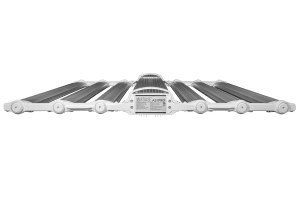

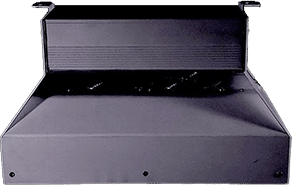

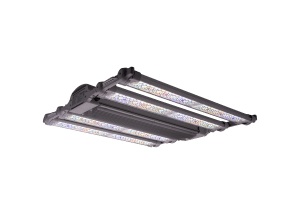


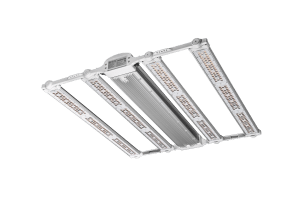
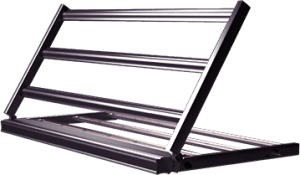
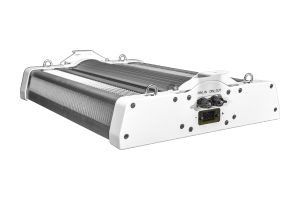


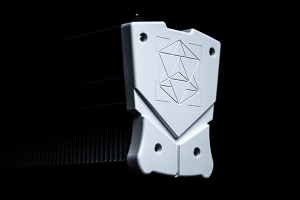

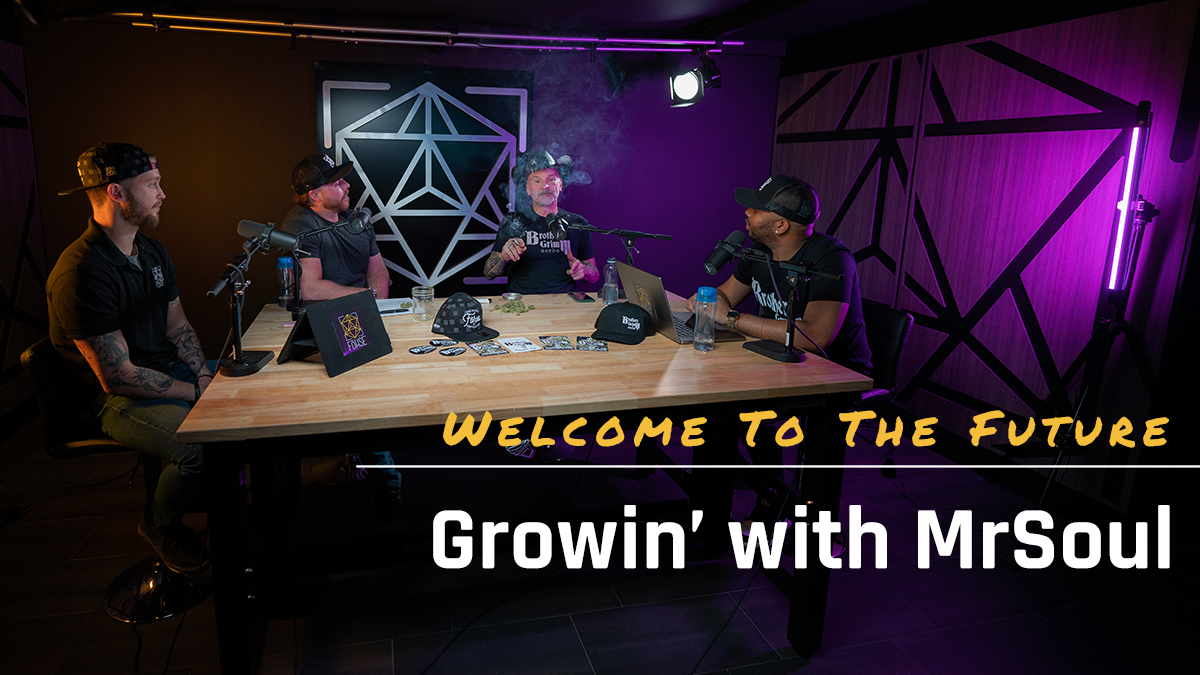

![High Efficiency, Increased Yields | Perfect Harvest [HIGH]LIGHT 💡](https://resources.fohse.com/wp-content/uploads/2023/01/maxresdefault-1024x576.webp)
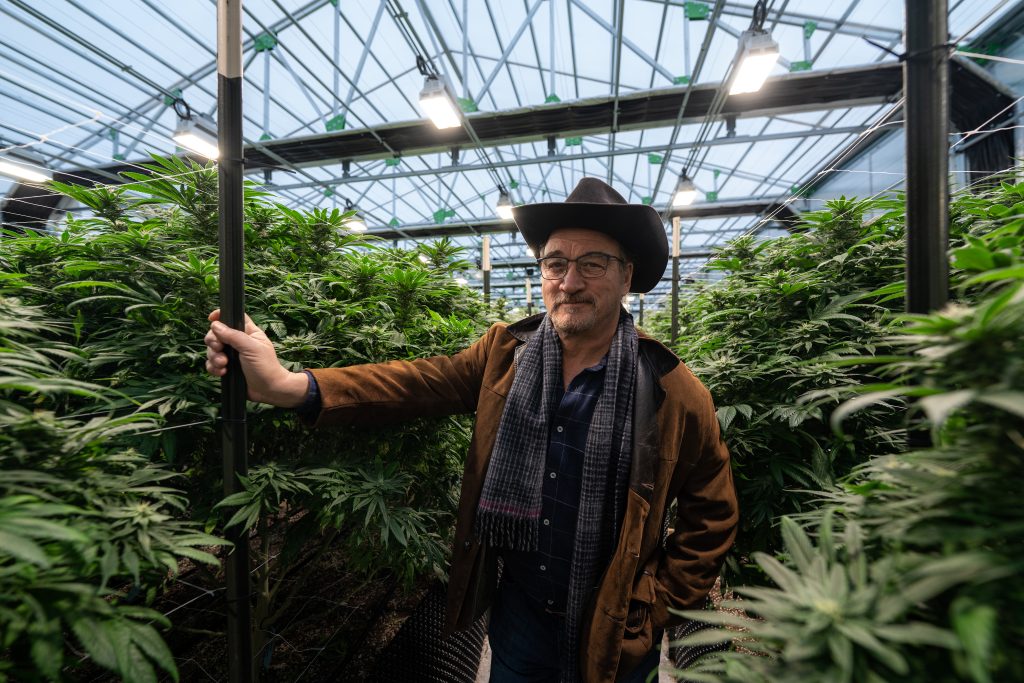
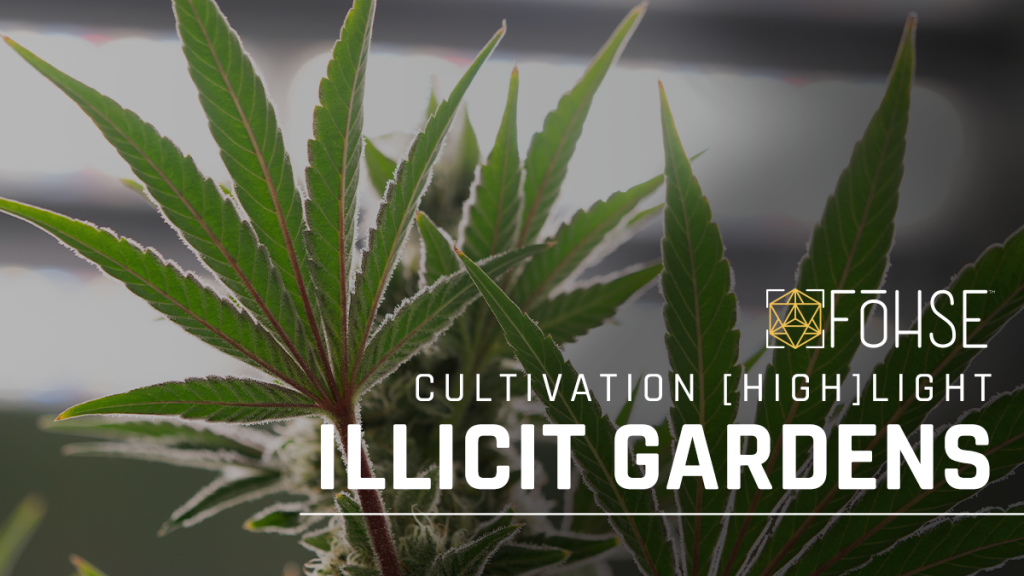
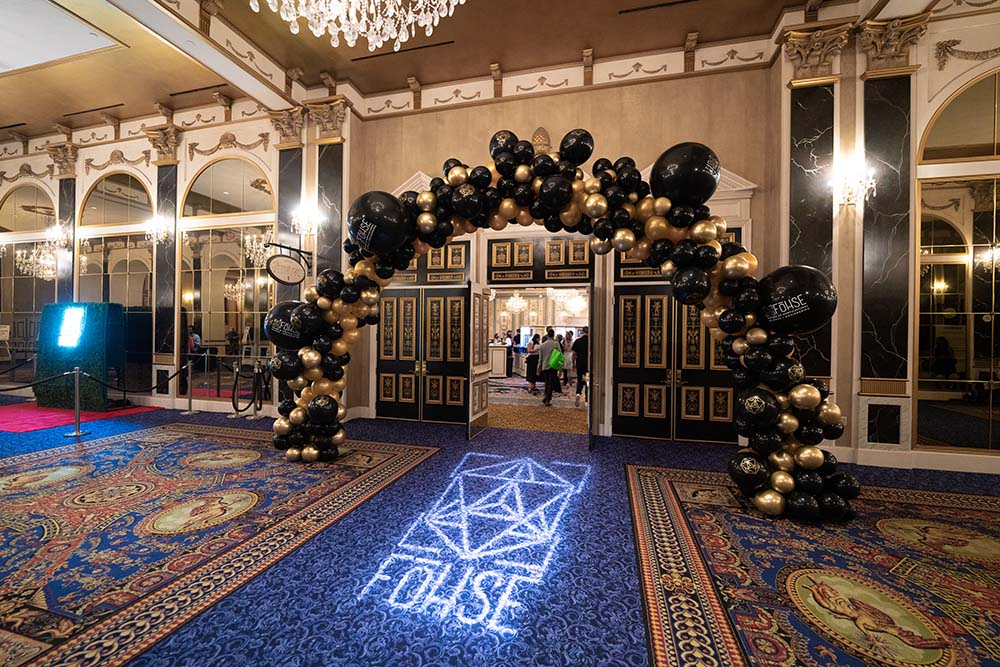
![Client [HIGH]💡 | TruInfusion | F1V](https://resources.fohse.com/wp-content/uploads/2023/10/Fohse-Tru-Infusion-19.jpg)
